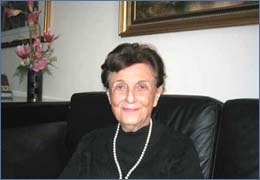The Holocaust
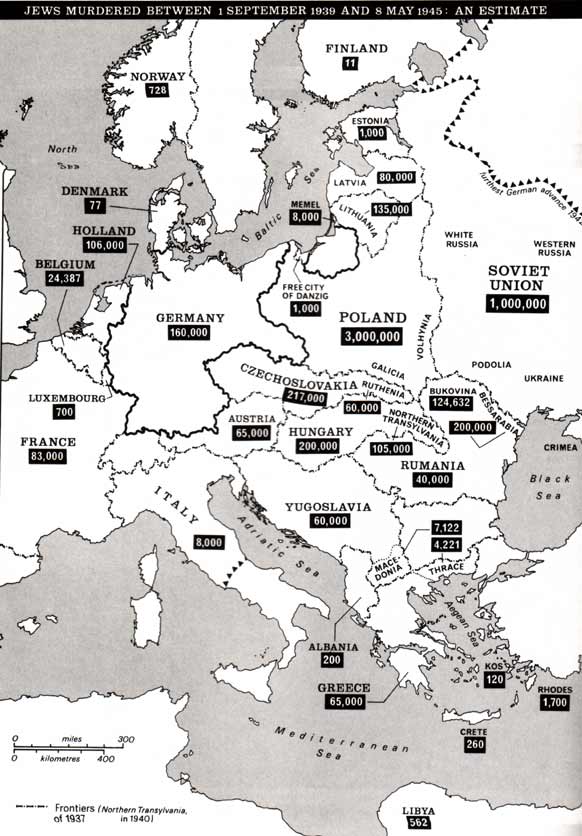 1 September1939 and 8 May 1945: an estimate.
1 September1939 and 8 May 1945: an estimate.
Origin: Atlas of the Holocaust (Martin Gilbert)It is well known that six million Jews died in the vast and complex series of events that have come to be known as the Holocaust . Today, nearly 60 years after the end of the Second World War, the details, scope and significance of those events continue to astonish those who attempt to understand what happened. The Holocaust, certainly history’s most heavily documented genocide , is a focus for continuing attempts to understand issues of hatred and genocide, both in history and the present.
The Nazi government of Adolf Hitler devised a comprehensive strategy to rid Europe of its entire population of Jews, first by emigration and later by outright mass killing. They also targeted broad groups of political opponents, including Communists, and other groups they considered inferior, including Slavic peoples, the gypsies, also called Roma, disabled people and homosexuals. But European Jews, of whom two of every three perished, were their primary victims.
The foundations of the plan and the sometimes unwitting complicity of much of the civilized world, including even democratic governments and the Catholic church, are cloudier.
The harsh peace of the First World War imposed great hardships on Germany through the 1920s and 1930s, creating the foundation of discontent which Hitler and his co-conspirators were able to manipulate and exploit. They created a system of propaganda and legislation so overwhelming and pervasive that it helped to convince a cultured nation that the source of its misery was its Jewish population.
 Jews are marched through the streets of the
Jews are marched through the streets of the
Warsaw ghetto as it burns.
Origin: Nazi war archivesAfter manipulating his way into office as German chancellor in January 1933, Hitler created a program of official antisemitism . It quickly escalated from resentment to persecution then isolation in ghettoes and finally mass murder in killing fields and death camps. Children, men and women of all ages were killed simply on the basis of their religious origin.
The Nazis created a myth of racial purity based on racist hygiene, a belief that higher genes were dominant in Aryan races such as Germans, lower genes in non-Aryan races such as Jews and Slavs. Lower genes were perceived to be a threat to society. The new concepts of this racial biology and the centuries old antisemitism in Europe laid the foundation for the Holocaust.
They portrayed Jews as lazy, arrogant, usurious and filthy criminals who undermined the purity of German culture and Aryan blood. At the same time, the Nazis also considered Jews to be powerful racial opponents with whom the Nordic races contended for world domination. At the feet of the Jews the Nazis laid the blame for unemployment, poverty and diminished stature on the world stage.
Hitler and his associates offered a brainwashed public a vision that would rescue them from the ignominy they had known since being defeated in the 1914-1918 war. Much of the nation co-operated and the rest of the world stood by as the program went into effect.
With scientific precision, the Nazis measured the Jewish populations of Germany and its European neighbours, and before the outbreak of the Second World War in 1939, the elimination of German Jews was already well underway.
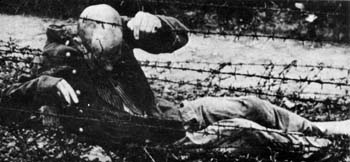 Jews are marched through the streets of the
Jews are marched through the streets of the
Many desperate prisoners deliberately made for
the fences of concentration camps, knowing they
would either be shot or electrocuted.
Origin: Nazi war archivesThe Nazis first destroyed the Jewish professional and merchant classes with the Nuremberg Laws -- “purity laws” passed to enforce a complete separation between Aryans and non-Aryans, particularly Jews. This was followed by the brutal Kristallnacht of 1938, when synagogues were set on fire and Jewish businesses destroyed, leaving German city sidewalks covered with shattered glass. The Nazis established ghettoes, sealing Jews in cramped conditions where disease and starvation advanced their multiple goals of further demoralizing, weakening and reducing the population. But this was merely a preview of worse atrocities that lay ahead.
Soon after attacking Czechoslovakia and Poland, the Nazis began the transportation of tens of thousands of Jews to a network of concentration camps where they began the first phases of what they called the “final solution” to the existence of European Jewry.
Perhaps two million died outside the camps — by starvation and disease in ghettoes or at the hands of Einsatzgruppen, or mobile killing squads. The remainder died in the camps, where they were deliberately starved, worked to exhaustion, exposed to disease, subjected to torture and bizarre medical experiments and brutalized by guards. Many were shot and many more, numbering in the millions, were killed in the infamous gas chambers. The Auschwitz-Birkenau network of camps in Poland was by far the largest Nazi complex designed for efficient mass murder. There, as in other death camps, hundreds at a time were shaved, made to strip naked and ordered to sort their own belongings into piles before being forced into sealed chambers and fatally gassed. Their bodies were harvested of gold teeth and fillings before they were burned in ovens or in open fires, filling the air with the horrifying smell of their incineration.
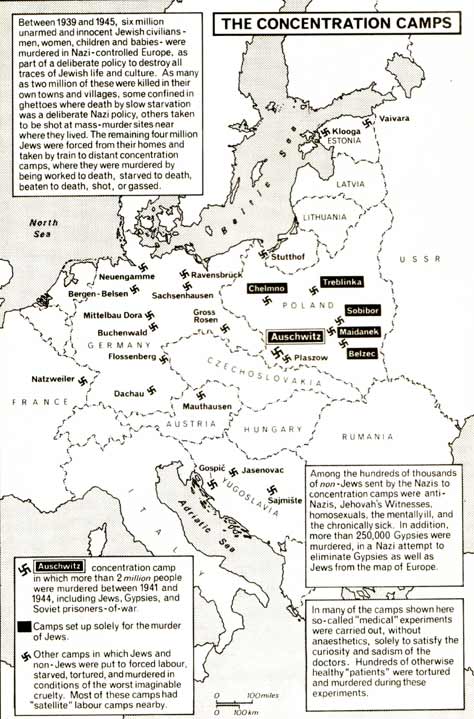 Map 8: The concentration camps
Map 8: The concentration camps
Origin: The Holocaust (Martin Gilbert)In the final months of the Second World War, as German defeat became inevitable, the Nazis worked desperately to complete their program of annihilation at the same time as they scrambled to obliterate evidence of their atrocities.
They deliberately blew up their gas chambers and tried to eliminate surviving witnesses before the camps were liberated and the war in Europe concluded in May 1945. But the post-war trials at Nuremberg finally and firmly established the catalogue of crimes that the world struggles to comprehend even today.
 Victims of the Holocaust who died at
Victims of the Holocaust who died at
Bergen-Belsen concentration camp in Germany.
Origin: Nazi war archivesPerhaps incredibly, a pernicious undercurrent of denial continues to exist, powered by individuals and groups who foster the idea that the Holocaust did not happen or that it has been exaggerated. Their subversive efforts have helped to foster renewed dedication among survivors, their descendants and the public at large to educate everyone, and strive to assure that the Holocaust is neither forgotten nor repeated.
Before The War (Main)
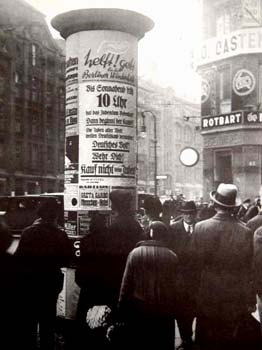 The poster reads: Jews are given until 10
The poster reads: Jews are given until 10
A.M. on Saturday to reflect. Then the fight begins! The Jews of the world want to destroy Germany! German people! Defend yourselves! Do not buy from the Jews!
Origin: Nazi war archivesThough the massive gas-chamber killings of 1942 to 1944 are the most infamous aspect of the Holocaust, the Nazis had begun laying the foundations for their "final solution" to the Jewish question much earlier. As they were enacting statutes that robbed Jews of power, authority and basic human rights, they were also saturating the rest of the German population with propaganda – an information barrage that softened the target for the more vicious attack that was to follow.
 "Jew perish", Synagogue in Dusseldorf, 1933.
"Jew perish", Synagogue in Dusseldorf, 1933.
Origin: Nazi war archivesThe burning of the Reichstag in 1933 gave the Nazis an excuse to hunt down their opponents and establish Dachau, the first official concentration camp. Soon they passed the first of more than 40 separate laws that eventually removed all rights and citizenship from Germany's Jews, creating a façade of legality to justify the barbarism that would follow.
From the Collection
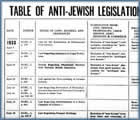
The Black Book
In 1946, the same year the Nazis faced trials for their war crimes, The Black Book laid out the evidence of the Holocaust, showing, much as a prosecutor would, that the Nazis' program of mass destruction had been carefully planned and deliberated.

Der Giftpilz
Nazi propagandist Julius Streicher, publisher of the newspaper Der Sturmer, was also responsible for Der Giftpilz, or The Poison Mushroom. The illustrated collection of children's stories fabricated wild, hateful claims about the moral and physical characteristics of Jews.
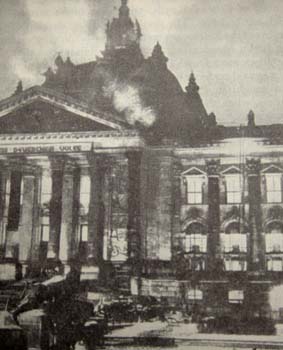
The Hitler Terror
In 1933, the same year Hitler became German chancellor, this forward-looking book, prepared by the World Committee for the Victims of German Fascism, raised alarm about what the Nazis were doing. It warned grimly and accurately about the terrible events that were to follow, including mass killings in concentration camps.
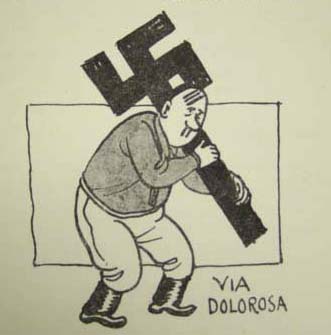
Hail Hitler
This mocking, sarcastic book was published in London in 1934, with the purpose of using the Nazis' own words to ridicule them.
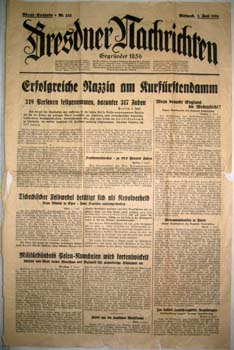
Newspapers (translated from German)
Two young women complain that Jews should not be baptized as Christians because they are criminals and will ruin the church.
The Black Book
"The German fascists plotted the destruction of the Jews an integral part of their program to enslave the world. From the very outset of their bloody adventure, the Nazis schemed to tear up the roots of German and world Jewry. They began with antisemitic street demonstrations; they proceeded to smash the economic and cultural bases of modern Jewish existence, and they rapidly moved to the planned conclusion of their conspiracy - mass murder! Every Nazi thought and deed led inexorably to the gas chambers of Treblinka.

"Antisemitism in Nazi Germany cannot be understood merely as a spontaneous expression of a people gone mad. Nobody will deny that it was preached and practiced with pathological frenzy. The civilized world has witnessed with horror the maniacal fury which gripped unreasoning millions. But the real horror lies in the cold-blooded deliberation with which the fascists set out to murder their victims. This warfare against the Jews was a calculated strategy, a carefully organized plan worked out in minute detail by the Nazis. It was not an incidental feature of German Fascism. It was a basic element of Nazi dynamics."
In 1946, the same year that the world tried the Nazis for their war crimes at Nuremberg, the Jewish Black Book Committee - an assembly of members of several Jewish organizations - published the aptly named Black Book. It laid out, as a prosecutor would, 500 pages of evidence against the Nazis, proving them responsible for the Holocaust . The book showed the Holocaust to have been planned down to the smallest details - from the laws that clamped ever more tightly on the throats of Europe's Jews to the calculation of the precise number of calories it would take to starve a person slowly.
"When we speak of Hitler's ‘War against the Jews,' we are using a figure of speech," the authors set out in their ‘Indictment.' "It was a war against unarmed men, against women and children, carried on by an army of many millions of highly expert soldiers using all the destructive techniques of modern military science known at the time. That is not war. That is murder."
Table of anti-Jewish legislation in Germany 1933-1943
| Date |
Source |
Titles of laws, decrees, and ordinances |
Elimination of civil service professions, labor service, army, industry and commerce |
Exclusion from: education, cultural and public life |
Taxation and expropriation |
Laws affecting civil rights |
|
1933 April 7
|
RGBL,.I
p. 175
|
Law for the Restoration of Professional Civil Service
|
Exclusion of “non-Aryan” civil servant: exceptions for “privileged non-Aryans”
|
Exclusion of “non-Aryan” teachers, exceptions for “privileged non-Aryans
|
|
|
|
April 7
|
RGBL.,I
P. 188
|
Law Regarding Admission to Legal Professions
|
Exclusion of “non-Aryan” lawyers: exceptions for “privileged non-Aryans”
|
|
|
|
|
April 22
|
RGBL.,I
p.222
|
Decrees Regarding Physicians’ Services with National Health Insurance
|
Exclusion of “non-Aryan” physicians from panel practice: exceptions for “privileged non-Aryans”
|
|
|
|
|
April 25
|
RGBL.,I
p.225
|
Law against the overcrowding of German schools
|
|
Introduction of Numerus Clausus
|
|
|
|
July 14 July 26
|
RGBL.,I
p.40
RGBL.,I
pp.538 – 539
|
Law Regarding Revocation of Naturalization and Annulment of German Citizenship. Decree to Same Law
|
|
|
|
Basis for revocation of naturalization of Eastern European Jews
|
|
Sept.22
|
RGBL.,I
p. 661
|
Law Regarding Establishment of Reich Chamber of Culture
|
|
Basis for exclusion of “non-Aryans” from art, music, literature, etc.
|
|
|
|
Sept.29
|
RGBL.,I
p.685ff
|
Law Regulating
Peasant Holdings
|
Exclusion of “non-Aryans” from labor and ownership of land
|
|
|
|
|
Oct. 4
|
RGBL.,I
p.713
|
Law Regarding Editors
|
|
Exclusion of “non-Aryans” from journalism
|
|
|
|
1934 March 23
|
RGBL.I
p.213
|
Law Regarding Expulsion from the Reich
|
|
|
|
Basis for deportation of Eastern European Jews
|
|
1935
May 21
|
RGBL.,I
p. 609
|
Defense Law
|
Exclusion of “non-Aryans” from the Webrmacht
|
|
|
|
|
June 26
|
RGBL.I
p. 769
|
Reich Labor Service Law
|
Exclusion of “non-Aryans” from labor service
|
|
|
|
|
Sept.15
|
RGBL.,I
p.1146
|
Reich Law on Citizenship
|
|
|
|
Jews’ status changed from citizen to subject
|
|
Sept.15
|
RGBL.,I
pp.1146 and 1147
|
Law for the Protection of German Blood and Honor
|
|
|
|
Intermarriage made criminal offense
|
|
Nov.14
|
RGBL.,I
pp. 1333
and1334
|
1 st Decree Supplementing Reich Law on Citizenship
|
Compulsory retirement of Jewish officials
|
|
|
|
|
1936
1937
|
|
Minor decrees and ordinances supplementing earlier legislation issued during these two years
|
|
|
|
|
|
1938 Mar.28
|
RGBL.,I
P 338
|
Law on the legal Status of Jewish Communities
|
|
Jewish communities deprived of status as “bodies of public law”
|
|
|
|
Apr. 22
|
RGBL.,I
p.404
|
Decree against Aiding in Concealment of Ownership of Jewish Enterprises
|
|
|
Assistance by non-Jews in concealing Jewish ownership prohibited
|
|
|
Apr.26
|
RGBL.,I
p.414
|
Decree Regarding Registration of Jewish Property
|
|
|
Enforcement of registration of Jewish domestic and foreign property over 5000 Reichsmark
|
|
|
Jul.6
|
RGBL.,I
p.823
|
Law on Industrial Enterprises
|
Exclusion of Jews from industrial enterprises
|
|
|
|
|
Jul.23
|
RGBL.,I
p.922
|
3 rd Notice Regarding Identification Cards
|
|
|
|
|
|
July 25
|
RGBL.,I
p.969
|
4 th Decree Supplementing Reich Law on Citizenship
|
Cancellation of licenses for Jewish physicians with exceptions for care of Jewish patients
|
|
|
|
|
Aug.17
|
RGBL.,I
p.1044
|
2 nd Decree Supplementing law Regarding Change of Names
|
|
|
|
Compulsory “Jewish” first names
|
|
Sep.27
|
RGBL.,I
p.1403
|
5 th Decree Supplementing Reich Law on Citizenship
|
Revocation of Admission of Jewish Lawyers with exceptions for representation of Jews
|
|
|
|
|
Nov.12
|
RGBL.,I
p.1579
|
Decree Regarding Atonement Fine for Jews
|
|
|
Imposition of Fine of one billion Reichsmark on all German Jews
|
|
|
Nov.12
|
RGBL.,I
p.1580
|
Decree Regarding elimination of Jews from German Economic Life
|
Final elimination of all Jews from German economy
|
|
|
|
|
Nov.12
|
RGBL.,I
p.1581
|
Decree Regarding Restoration of Jewish Places of Business
|
|
|
Jews ordered to restore at their own cost all damages caused by pogroms
|
|
|
Nov.15
|
V.B. Nov. 16,
‘38
|
Ordinance regarding School Attendance of Jewish Children
|
|
Complete exclusion of Jewish children from German schools
|
|
|
|
Nov.28
|
RGBL.,I
p.1676
|
Police Decree Regarding Appearance of Jews in Public
|
|
|
|
Jews banned from certain districts; hours of public appearance restricted
|
|
Dec.3
|
RGBL.,I
pp.1709ff
|
Decree Regarding Utilization of Jewish Property
|
|
|
|
|
|
1939 Feb.21
|
RGBL.,I
p.282
|
3 rd Ordinance Regarding Registration of Jewish Property
|
|
|
Confiscation of gold and valuables owned by Jews
|
|
|
Mar.4
|
H.F
Mar.4, ‘39
|
Decree Regarding Employment of Jews
|
|
|
|
Introduction of forced labor for Jews
|
|
Apr.30
|
RGBL.,I
pp.854f
|
Law Regarding Leases with Jews
|
|
|
|
Basis for exclusion of Jews from non-Jewish dwellings and establishment of Jewish dwellings
|
|
Jul.4
|
RGBL.,I
pp1097ff
|
10 th Decree Supplementing Reich Law on Citizenship
|
|
Establishment of Reich Association of Jews in Germany as sole representative of all Jewish affairs
|
|
|
|
1940 Feb.2
|
J.N.,10
|
Decree Regarding Emigration Tax for Jews
|
|
|
Special emigration tax for Jews
|
|
|
Feb.6
|
J.N., 11
|
Decree Regarding Clothes Rationing for Jews
|
|
|
|
Clothes ration cards withheld from Jews
|
|
1941
Sep.1
|
RGBL.,I
p.547
|
Police Decree Regarding Identification Badges for Jews
|
|
|
|
All Jews over six years of age compelled to wear “Star of David”
|
|
Oct.31
|
RGBL.,I
pp681f
|
Decree Regarding Employment of Jews
|
|
|
|
Stringent registration covering the employment of Jews
|
|
Nov.25
|
RGBL.,I
pp.722ff
|
11 th Decree Supplementing Reich Law on Citizenship
|
|
|
|
Jews residing abroad deprived of status as German subjects
|
|
1942 Apr.17
|
J.N.,16
|
Ordinance Regarding Identification of Jewish Apartments
|
|
|
|
Compulsory marketing of Jewish apartments with “Star of David”
|
|
Apr.17
|
J.N.,16
|
Decree Regarding Use of Public Conveniences
|
|
|
|
Use of public conveniences prohibited to Jews
|
|
May 15
|
J.N.,20
|
“Nuissance” Decree
|
|
|
|
Keeping of pets prohibited to Jews
|
|
May 29
|
J.N. 22
|
“Nuissance” Decree
|
|
|
|
Use of services of non-Jewish hairdressers prohibited to Jews
|
|
Jun. 19
|
J.N., 41
|
Decree
|
|
|
Confiscation of electric appliances, typewriters, bicycles owned by Jews
|
|
|
1943 Jul.1
|
RGBL.I
p.372
|
13 th Decree Supplementing Reich Law on Citizenship
|
|
|
|
Jews forbidden to buy books
|
|
AFTER 1943
|
|
No further legal material available
|
|
|
|
|
| |
|
|
|
|
|
|
|
Abbreviations: RGBL.,I – Reichsgesetzblatt, Teil I (Reich Law Gazette, Part I)
V.B – Voelkischer Beobackter
H.F – Hamburger Fremdenblatt
J.N – Juedischen Nachrichtenblatt
*The term “non-Aryans’ (as defined in the “Decree Supplementing the Law for the Restoration of Professional Civil Services” of April 11, 1933 – RGBL.,I p.195) is used in all laws from April 7, 1933 to September 15, 1935, where the term “Jew” (as defined in the “1 st Decree Supplementing the Reich Law of Citizenship” of November 14, 1935 – RGBL.,I p. 1333) was substituted.
(Not contained in Appendix)
|
Der Giftpilz
![Baldur von Schirach (saluting), leader of the Hitler Youth, and Julius Streicher (in light-colored jacket), editor of the antisemitic newspaper, "Der Stuermer," review a parade of Hitler Youth in Nuremberg. [Photograph #08063]](http://libraryapps.centennialcollege.ca/holocaust_pollock/popups/images/08063_350.jpg) Baldur von Schirach (saluting), leader of the
Baldur von Schirach (saluting), leader of the
Hitler Youth, and Julius Streicher (in light-colored
jacket), editor of the antisemitic newspaper,
"Der Stuermer," review a parade of Hitler Youth
in Nuremberg. [Photograph #08063]
Origin: United States Holocaust Memorial Museum
Julius Streicher, the Nazi publisher of the antisemitic newspaper Der Sturmer, issued Der Giftpilz, or The Poison Mushroom, in 1938 to generate antisemitism among young children by wrapping hateful, corrosive lies about Jews in the form of a traditional children's storybook. Today, its naked propaganda is shockingly apparent, but at the time, it was just one step in the Nazis' feverish rush toward the complete destruction of all Jews.
The book uses outright fabrications to create a portrait of Jews as ugly, depraved and dishonest outsiders who must be rooted out for the good of society. Streicher used many of the same simplistic and often contradictory premises for Der Giftpilz that he used in his newspaper. Defying logic, the stories taught that Jews were cunning but also stupid; too lazy to work, yet fanatically dedicated to destroying the Aryan "race"; that they were money-worshipping capitalists but also capitalist-bashing Bolsheviks. The illustrations portrayed non-Jews as fair-haired, attractive, ideal Aryans. They showed Jews as dark, sinister, ugly caricatures.
![The facial features of a young German woman are measured during a racial examination. [Photograph #78569]](http://libraryapps.centennialcollege.ca/holocaust_pollock/popups/images/78569_350.jpg) The facial features of a young German woman
The facial features of a young German woman
are measured during a racial examination.
[Photograph #78569]
Origin: United States Holocaust Memorial Museum
Der Giftpilz was one of a raft of similar books for children, which in turn formed part of a pervasive climate of public and official propaganda. The book, contrived as a series of lessons, compares the Jew to the poison mushroom in the wild: sometimes difficult to distinguish, but always deadly. Streicher was tried for war crimes and hanged in 1946. Today, his book stands as a stark warning against the very hatred it had tried to generate.
Translations

The Poison Mushroom
A boy and his mother gather wild mushrooms and she tells him that Jews, like poison mushrooms, are difficult to identify, and that it is critical to learn how. He proudly assures her that he already knows, and she praises him.


How One Recognizes the Jew
A boys' class is learning to identify Jews. The boys eagerly repeat what they have learned: Jews have bent noses, thick lips, fleshy eyelids and shifty eyes. In short, they resemble the Devil.


How the Jews Came to be Among Us
Jews are portrayed as dirty swindlers and outsiders who, after accumulating enough wealth, insidiously try to blend into the larger population, always unsuccessfully.


What is the Talmud?
A rabbi tells his student that the Talmud teaches Jews they are superior to Gentiles. Gentiles, he says, are made to do all the work while Jews have everything done for them.


Why Do Jews get Baptized?
Two young women complain that Jews should not be baptized as Christians because they are criminals and will ruin the church.


How a German Farmer was Driven From his Home and Farm
Two young women complain that Jews should not be baptized as Christians because they are criminals and will ruin the church.

Der Gifpilz (Main)
![Baldur von Schirach (saluting), leader of the Hitler Youth, and Julius Streicher (in light-colored jacket), editor of the antisemitic newspaper, "Der Stuermer," review a parade of Hitler Youth in Nuremberg. [Photograph #08063]](/holocaust_pollock/popups/images/08063_350.jpg) Baldur von Schirach (saluting), leader of the Hitler Youth, and Julius Streicher (in light-colored jacket), editor of the antisemitic newspaper, "Der Stuermer," review a parade of Hitler Youth in Nuremberg.
Baldur von Schirach (saluting), leader of the Hitler Youth, and Julius Streicher (in light-colored jacket), editor of the antisemitic newspaper, "Der Stuermer," review a parade of Hitler Youth in Nuremberg.
Origin: United States Holocaust Memorial MuseumJulius Streicher, the Nazi publisher of the antisemitic newspaper Der Sturmer, issued Der Giftpilz, or The Poison Mushroom, in 1938 to generate antisemitism among young children by wrapping hateful, corrosive lies about Jews in the form of a traditional children's storybook. Today, its naked propaganda is shockingly apparent, but at the time, it was just one step in the Nazis' feverish rush toward the complete destruction of all Jews.
The book uses outright fabrications to create a portrait of Jews as ugly, depraved and dishonest outsiders who must be rooted out for the good of society. Streicher used many of the same simplistic and often contradictory premises for Der Giftpilz that he used in his newspaper. Defying logic, the stories taught that Jews were cunning but also stupid; too lazy to work, yet fanatically dedicated to destroying the Aryan "race"; that they were money-worshipping capitalists but also capitalist-bashing Bolsheviks. The illustrations portrayed non-Jews as fair-haired, attractive, ideal Aryans. They showed Jews as dark, sinister, ugly caricatures.
![The facial features of a young German woman are measured during a racial examination. [Photograph #78569]](/holocaust_pollock/popups/images/78569_350.jpg) The facial features of a young German woman are measured during a racial examination.
The facial features of a young German woman are measured during a racial examination.
Origin: United States Holocaust Memorial MuseumDer Giftpilz was one of a raft of similar books for children, which in turn formed part of a pervasive climate of public and official propaganda. The book, contrived as a series of lessons, compares the Jew to the poison mushroom in the wild: sometimes difficult to distinguish, but always deadly. Streicher was tried for war crimes and hanged in 1946. Today, his book stands as a stark warning against the very hatred it had tried to generate.
Translations
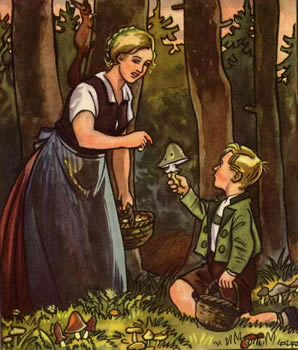
The Poison Mushroom
A boy and his mother gather wild mushrooms and she tells him that Jews, like poison mushrooms, are difficult to identify, and that it is critical to learn how. He proudly assures her that he already knows, and she praises him.
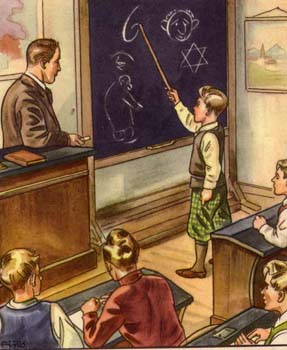
How One Recognizes the Jew
A boys' class is learning to identify Jews. The boys eagerly repeat what they have learned: Jews have bent noses, thick lips, fleshy eyelids and shifty eyes. In short, they resemble the Devil.
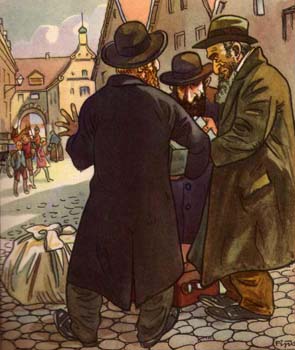
How the Jews Came to be Among Us
Jews are portrayed as dirty swindlers and outsiders who, after accumulating enough wealth, insidiously try to blend into the larger population, always unsuccessfully.
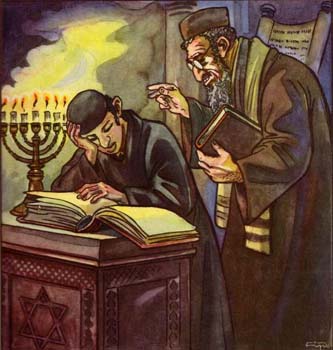
What is the Talmud?
A rabbi tells his student that the Talmud teaches Jews they are superior to Gentiles. Gentiles, he says, are made to do all the work while Jews have everything done for them.
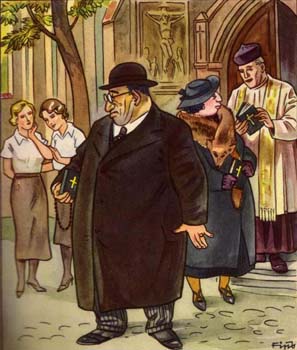
Why Do Jews get Baptized?
Two young women complain that Jews should not be baptized as Christians because they are criminals and will ruin the church.
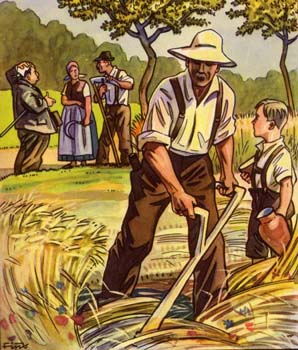
How a German Farmer was Driven From his Home and Farm
Two young women complain that Jews should not be baptized as Christians because they are criminals and will ruin the church.
The Poison Mushroom
The Poison Mushroom (Der Giftpilz) pg. 3-7
Translations and commentary provided by Joe Koenig

Just as it is often difficult to recognize poison mushrooms from good mushrooms, so it is often very difficult to recognize Jews as thieves and criminals...
Little Franz went searching for mushrooms in the woods with his mother. Franz, is usually a very quite boy, but today he seems to be transformed. He jumps over bushes and ditches and shouts with excitement. His mother looks on with delight at the happiness of her son. But then she scolds him: "What's going on Franz? I've already filled up my basket. And you haven't even found one mushroom yet. You've got to be more diligent and look at the ground, not at the sky." That is how Mother reproached him. Franz was taken aback. "You are right, Mother. I've completely forgotten to search for mushrooms, it's so beautiful here in the woods. But from now on I'll work harder!" A half-hour later, Franz returns to Mother triumphantly. "Hurrah! Now I've got just as many mushrooms as you have, Mother. And a bit more quietly he adds: "I think, maybe, there are a few poisonous ones here too." Mother smiles. "That doesn't surprise me! But that's not too serious. We'll just find the poisonous ones and throw them away." Franz takes a mushroom from his basket. "Mother, this mushroom doesn't look right to me. It's poisonous for sure. Mother nods. "You've got that right! That's a satan mushroom (boletus satanas). It is very poisonous. You can recognize it by its colour and its disgusting smell." Franz throws the mushroom to the ground and crushes it with his foot. Then he takes another mushroom from his basket. It is big, with a long, light gray stem and a bright red cap with many white spots.
"Mother, I don't trust this mushroom either. The colour is too gaudy. It must be poisonous too!" "I'll go along with that. It is a fly algaric. Throw it away," Mother confirms. Then Franz presents two other mushrooms from his basket. "But these two are not poisonous. I recognize them. This one is a cep mushroom and the other one is a champignon. You can eat these. They taste very good too." Mother looks at the mushrooms very carefully. "Correct! We're taking these two home." And she places the two mushrooms in her basket. "I've got another champignon" Franz calls out and takes another mushroom from his basket. Mother is suddenly frightened. "For God's sake, Franz! That's no champignon! That's a deadly amanita (knollenblaetterpiltz). It is the most dreadful poison mushroom of all! And it is doubly dangerous because it is so easy to mistake for a good one." Mother now takes Franz's basket and takes out the mushrooms one by one. "That is a chanterelle. It's good to eat, but that one's a sulfur cap (schwefelkopf). It is poisonous. Away with it. And that's a red cap. You can eat that. But this other one is a poisonous saffron milk cap. We mustn't take that home." That's how Mother taught her son about the different kinds of mushrooms. Then they both took their baskets and slowly headed home. Along the way, Mother said: "Look Franz, just as it is with mushrooms in the forest, so it is with the people on this Earth. There are good mushrooms and there are good people. There are poisonous or bad mushrooms and there are bad people. And you have to watch out for these bad people just like you do for poisonous mushrooms. Do you understand that?" "Yes, Mother, I understand," says Franz. "When you get involved with bad people, bad things can happen, just like when you eat a poison mushroom. It can kill you." Mother asked another question: "And do you also know who these bad people, this poison mushroom of humanity is?" Franz thumped his chest proudly. (At this point, in the original book there is a full page picture: Mother is explaining to kneeling Franz, holding a poison mushroom. Caption reads: "Just as the poison mushroom is often very difficult to distinguish from the good mushrooms, so it often very difficult to recognize the Jews as swindlers and criminals." Yes, Mother! I know that. It is the Jews. Our teacher has often explained that to us in school. Mother laughed and patted Franz on the shoulder. "My word, you are a very clever boy! But now pay close attention so you will understand what I'm going to tell you now. I'll repeat once again: there are good mushrooms and there are bad mushrooms. There are good people and there are bad people. The bad people are the Jews. But it is often really hard to tell apart the bad people from the good ones." " I can understand that," says Franz, "That is often just as hard as sorting out the poisonous mushrooms from the edible ones." "Exactly," Mother praised him. And then she went on. She became very serious. "The Jews are bad people. They are like poison mushrooms. And just as it is often difficult to tell poison mushrooms from good ones, so it is often difficult to recognize Jews as swindlers and criminals. Just as poison mushrooms appear in different forms, Jews also know how to hide themselves, to take on different disguises." "What sort of different disguises do you mean?" asked little Franz. Mother saw that her child had not fully understood. Patiently, she explained further. "Well, listen carefully. There are, for example, the peddler Jew. With cloth and all sorts of other odds and ends, he goes from village to village. He claims his wares are the best and cheapest. In fact they are the worst and most expensive. He cannot be trusted!" "Just like a poison mushroom. You cannot trust it either." "And it's exactly the same with the cattle dealer Jews (), with the department store Jews, with the kosher butcher Jews, with the Jew doctors, with the baptized Jews, and so on. No matter how they disguise themselves, even when they pretend to be friendly to us, and when they say a thousand times that they mean us well, we must not believe them. They are Jews and they remain Jews. They are poisonous for our people (Volk)." "Just like the poison mushrooms," says Franz. "Yes, my child! Just as a single poison mushroom can kill a whole family, so just one Jew can destroy a whole village, a whole city, even a whole nation." Franz understood his mother. Mother, do all non-Jews know that the Jew is as dangerous as a poison mushroom? Mother shook her head. "Unfortunately not, my child. There are many millions of non-Jews who have not learned to recognize the Jews. And that is why we have to teach people and warn them about Jews. We have to warn our youth about the Jews. Even our little boys and girls need to learn to recognize the Jews. They must discover that the Jew is the most dangerous poison mushroom that exists. Just as poison mushrooms shoot up out of the ground everywhere, the Jew can be found in all countries of the world. Just as poison mushrooms often cause the most terrible misfortunes, so too is the Jew the source of misery and poverty, of plague and death."
(afterword)
German youth must learn to recognize the Jewish poison mushroom. They must know the danger the Jew presents to the German People and the whole world. They must know that the Jewish Question (Judenfrage) is a Question of Destiny (Schicksalsfrage) for us all. The following short stories report the truth about the Jewish Poison Mushroom. They show us the different forms in which the Jew appears. These stories show us the depravity and baseness of the Jewish race. They show us the Jews as they really are, ...Devils in Human Form.
About the story
This first of 17 stories sets the tone for the book. Little Franz and his youthful mother, both blond and dressed in the ideal German country costumes, are out picking wild mushrooms, a popular if risky German recreation. Mother tests Franz to see if he can identify and avoid poisonous mushrooms.
Origin: Der Giftpiltz
How One Recognizes the Jew
How One Recognizes the Jew (Woran man die Juden erkent) pg. 8-11
Translations and commentary provided by Joe Koenig

The Jewish nose is bent at its tip. It looks like a "sixer".
In the seventh grade boys class, things are very lively today. The teacher is talking about the Jews. And that really interests the young fellows. Teacher Birkmann has drawn pictures of Jews on the blackboard. The lads are fascinated. Even the laziest of the students, "Emil the Snorer" is on his toes and not asleep like he often is in other classes. Herr Birkmann is of course a very fine teacher. All the children like him. What they enjoy most of all is when the teacher talks about Jews. And Mr. Birkmann is a master at it. In his life he has gotten to know all about the Jews. And he understands how to describe it all in such an exciting way that the lads like their daily "Jews Hour" best of all. Teacher Birkmann glances at the clock. "It is exactly 12 o'clock," he says. "We are going to sum up what we've learned in this hour. What were we talking about?" All the boys raise their hands. The teacher calls on Karl Scholz, the little whippersnapper in the front row. "We talked about recognizing Jews." "Good, now tell me about that." Little Karl reaches for the pointer, heads for the blackboard and points to the drawings. "The Jews are recognized mostly by their nose. The Jew nose is bent at its tip.
It looks like a number six. It's called the 'Jew six.' Lots of non-Jews have bent nose too. But their noses are bent higher up. That kind of nose is called a 'hook nose' or 'eagle nose.' They have nothing to do with the Jewish nose." "That's right!" says the teacher. "But one doesn't just recognize the Jew by his nose?" The lad goes on. "One can recognize the Jew by his lips. His lips are usually thick. Often the lower lip hangs down. They're called 'draggers.'
And you can also tell a Jew by his eyelids. They're usually thicker and fatter . Jews' eyes have a sneaky, piercing look?You can see it right away in his eyes that he is false, lying person."
The teacher calls on another student. He is Fritz Mueller and he is the best in the whole class. Fritz goes up to the board and explains: "The Jews are mostly short to medium height. They have short legs. Their arms are often also very short. Many Jews also have crooked legs and flat feet.
The often have a low, sloping forehead It's called a'runaway forehead.' Many criminals have a forehead like that. And the Jews are criminals. Their hair is mostly dark and often crinkly like Negroes' hair. Their ears are very big and look like the handle on a coffee cup."
The teacher turns to the class. "Pay attention, children! Why does Fritz always say: 'many Jews have crooked legs,' 'often they have sloping foreheads,' 'mostly their hair is dark'?"
Now Heinrich Schmidt raises his hand, a big, powerful fellow in the last row, and explains, "Not every Jew has all these characteristics. Many don't have a real Jewish nose, but they do have real Jews' ears. Some do not have flat feet but do have real Jews' eyes. It happens that at first glance, some Jews can't be recognized as a Jew. There are even Jews with blonde hair. When we want to be really sure that we can distinguish Jews from non-Jews, we have to look very carefully. But when you watch carefully, then you will notice right away if you are dealing with a Jew." "Very good!" the teacher praised him. "And now tell me about the other signs that lets you distinguish Jews from non-Jews. Richard, come on up" Richard Krause, a smiling blond youth goes to the blackboard. And then he gets going: "You can also recognize Jews by the way they move and their bearing. The Jew rocks his head back and forth. His drags his feet and his steps are uncertain. When the Jew speaks, he waves his hands around. It is called 'fiddling.' His voice often breaks when he is talking. The Jew almost always talks through his nose. Often the Jew also has a disgusting, sweetish smell. Someone with a good nose can actually smell Jews." The teacher is pleased. "That's right, children! You have really paid attention! And when you pay close attention like this in the world outside the classroom and you keep your eyes wide open, then you won't be deceived by Jews."
The teacher then presenting a poem on the blackboard for the children to read aloud:
From the Jew's face The evil Devil talks to us, The Devil, who, in every land Is known as an evil plague. If we want to be free of Jews And once again seek happiness and joy, Then youth must join hands with us, The Jewish devil to conquer.
Origin: Der Giftpiltz
How the Jews Came to be Among Us
How the Jews Came to be Among Us (So kamen die Juden zu uns) pg.12
Translations and commentary provided by Joe Koenig

"Just look at those guys! Those beards full of lice! Those dirty flapping ears…"
In a small old German town. The friendly sun smiles down on the pretty houses and the clean streets. The clock in the town hall strikes the fourth hour of the afternoon. School is out. The school bags on the back or under their arms, the throng of children head homeward. Karl and Fritz are among them. They have arranged to go to swimming together. The water is still a bit cold. But that doesn't matter. German boys aren't softies. The can take it. In the middle of the street, Fritz suddenly stops. He looks at a group of three men.
"Karl, just get a sight of that! For God's sake, look at them!" "Oh yes, you mean the three Eastern Jews over there? I know them well. They've been in our town since yesterday." Little Fritz had already seen many Jews. But he had never seen anyone so dirty and ugly. "Why do you say Eastern Jews?" Fritz asked. Karl knows what he's talking about. It isn't for nothing that he is a year older than Fritz and the best student in his class.. "Now, pay attention, Fritz! The Jews we see over there, they come from Galicia or Poland. And because their home is east of Germany, they are called Eastern Jews. Do you get it?"
Naturally Fritz understood at once. But he still couldn't grasp it. Just look at those guys! Those dreadful Jew noses! Those beards full of lice!
These dirty ears that stick out from their heads! These crooked legs! These flat feet! And these filthy, greasy clothes! And they, they're supposed to be people?" said Fritz. "And what kind of people!" replied Karl, "They are criminals of the worst kind. They lie and cheat, they steal and receive stolen goods. So much nastiness could scare you! At first they start with rags, bones, paper, old furniture and all sorts of junk. Finally they open little stores. They work together with thieves and robbers. Stolen goods go to the Jews and they sell them again. They make a lot of money that way."
"And when they've gotten rich from their thievery, what do they do then?" asked Fritz. Karl answered: "When they have enough money, they take off their dirty rags, shave their beards, run away from all this and dress up in modern suits and step about as if they were non-Jews. In Germany, they speak the German language and act as if they were German. In France they talk French and claim to be French. In Italy they want to be Italians, in Holland, Hollanders, in America, Americans, and so on. That's what they do everywhere in the world." Now Fritz had to laugh. "But listen, Karl, that still doesn't help them. Their bent Jewish noses, their Jewish ears, their crooked Jewish legs and their flat Jewish feet, they can't cut those off. That's how you can spot them as Jews right away!" Karl nodded. "Of course you can recognize them when you really open your eyes. But unfortunately there are many people who always fall for the Jewish swindles." "But not me," exclaimed Fritz, "I know the Jews! And I know a fine saying:
"From the East they came here once. Filthy, lousy, their purse empty. But after just a few years They became rich. Now they dress themselves in fancy clothes, They don't want to be Jews any more. Therefore eyes open and look carefully: A Jew remains a Jew."
About the story
When Hitler came to power, most German Jews could trace back their family's arrival in Germany hundreds of years, sometimes much longer. Jews first settled along the Rhine in Roman times. There were Jews from Poland, Czechoslovakia, Hungary and other eastern European countries living or studying in Germany. The notion here is that this stinking, ragged appearance was racially predetermined. The Nazis promoted popular pseudo-scientific 19th Century ideas: the German population was one pure blooded and distinct Teutonic Aryan race, while the Jews were described as a distinct, sinister mutant race. Even non-Nazi "Aryans" like Carl Jung held that Germans did not think or even dream like Jews. In fact Germans are not a distinct race but include a mixture of peoples. Judaism is a religion, not a race and also includes people of various regions and continents.
Origin: Der Giftpiltz
What is the Talmund?
What is the Talmud? (Was ist der Talmud?) pg. 15-19
Translations and commentary provided by Joe Koenig

"In the Talmud it is written, ‘Only the Jew is human. Non-Jewish peoples are not called humans. They are called cattle.' And because we Jews consider them cattle, we call them Goy."
Solly is 13 years old. He is the son of the Jewish cattle dealer Blumenstock from Langenbach. There is no Jewish school there. That's why Solly has to go to the German school. The other students don't like him. Solly is cheeky and impudent. Again and again there are arguments. And every time it is Solly's fault.
Today Solly is excused from going to school. He has to go to the Rabbi in the city. A rabbi is a Jewish priest. And this Jewish priest is going to test Solly to see if he has diligently done his Jewish religious studies. Solly has gone into the Synagogue. The Synagogue is the Jews' church. There the Rabbi waits for him. He is an old Jew with a long beard and a real devil-like face. Solly bows. Then the rabbi leads him to the lectern. Here a large, fat book lies open. It is the Talmud. The Talmud is the Jews' secret book of laws.
The rabbi begins the examination. "Solly, you have a non-Jewish teacher at school. And you hear every day what the non-Jews say, what they believe and by what laws they live… Solly interrupts the rabbi. "Yes sir, Mr. Rabbi, I hear that every day. But that doesn't concern me. I am a Jew. I obey totally different laws than the non-Jews. Our laws are written in the Talmud." The rabbi nods.
"Right! And now I want to hear what you know. Tell me a few of the sayings that you have heard in the school of the non-Jews!" Solly thinks. Then he says: "A saying of the non-Jews goes: 'Work is no disgrace.'" "What are the non-Jews trying to get at with that saying?" "They are trying to say that there is no disgrace when you have to work." "Do we Jews believe that too?" "No, we don't believe that! In our book of laws, the Torah, it says: "Work is very harmful and not beneficial.' "And that's why we Jews do not work and mostly have businesses. Non-Jews were created to work. In the Talmud it also says: 'The Rabbis teach us that there is no meaner work than farming. The Jew must neither plow the field or plant grain. Carrying on a business is much more profitable than working the soil.'" The rabbi laughs.
"You have learned that very well. And I know a Talmud saying that you must remember:" Then he opens the Talmud. Solly must read aloud: "The non-Jews were created to serve the Jews. They must plow, sow, dig, mow, bind the sheaves, and grind the flour. The Jews were created to find everything prepared for them." The rabbi continues testing. "Give me another principle or saying of the non-Jews." Solly replies: "The non-Jews say: 'Always be honest and true.' 'Honesty is the best policy.'" "What are the non-Jews trying to say?" "They are trying to say that one should always be honest. One should never lie or cheat. That's what the non-Jews say." "And what do we Jews do?" "We are permitted to cheat and deceive the non-Jews. In the Talmud it says: 'The Jews are permitted to swindle the non-Jews. All lies are allowed.' And it also says: 'Jews are not permitted to swindle his brother. But swindling non-Jews is permitted.'"
"When we loan money to non-Jews, we must set exorbitant interest rates. Because in the Talmud it says specifically: 'It is forbidden to lend money to non-Jews without charging exorbitant interest rates. The non-Jew must receive no benefit from the loan.' Jews are also permitted to rob the non-Jews. In the Talmud it is written: 'Regarding robbery, it is taught: Non-Jews are not permitted to rob each other. The non-Jew is also not allowed to rob the Jew. However, the Jew is permitted to rob the non-Jew at any time.' And it states further: 'If the Jew has stolen something from the non-Jew, and the non-Jew discovers it and demands it back, then the Jew shall simply deny everything. The Jewish court will side with the Jew.'
"In the same way, we Jews are permitted to buy stolen merchandise from thieves if the stolen goods come from non-Jews. We Jews are also permitted to receive stolen goods without committing a sin against our God. Also smuggling and cheating on taxes are permitted. In the Talmud it says that we can cheat the non-Jewish authorities on payments of duty and taxes. It states: 'It is permitted to smuggle because it written: You need not pay what you owe.' And robbery is permitted Jews. But we must only rob non-Jews. The Talmud says: 'The words, Thou shall not steal refer only to theft from Jews, according to the book. It does not refer to theft from non-Jews.'" "What does that mean?" asks the rabbi once more. "That means we are not supposed to lie to or steal from other Jews. But we can always cheat non-Jews. We are permitted to do that." The rabbi is satisfied.
"Excellent! Finally, tell me some of the laws in the Talmud!" Solly is happy because the rabbi praises him. He says: "In the Talmud it says: 'Only the Jew alone is human. The non-Jewish people are not called humans, they are classed as cattle.' And because the non-Jews are classed as cattle, we call them 'goy'. We are always permitted to swear a false oath before a non-Jewish court. In the Talmud it says: 'The Jew is allowed to swear a false oath in a non-Jewish court. Such an oath is to be considered a forced oath. Even when he swears an oath in the name of God, he is allowed to lie and, in his heart, to cancel his oath.' Another law says: 'It is written, thou shall not kill. That means one should not kill a member of the Jewish race. However, the goys, the non-Jews are not Jews, so they can therefore be killed.' And it also says in the Sirach: 'Juda, terrify all peoples! Raise your hand over the non-Jews! Stir up the anger of the non-Jews against one another and pour out rage! Smash the head of the rulers who are enemies of the Jews.'"
"That is enough," the rabbi interrupts. He goes to Solly and shakes his hand for a long time. Then he says: "You are a true Talmud scholar. And you will become a genuine Jew. Always think about what the Talmud expects of you. The teachings of the Talmud are our holiest laws. The teachings and laws of the Talmud are more important than the laws of the Old Testament. The teachings of the Talmud are the words of the living God of the Jews. The person who transgresses the laws of the Talmud deserves death. You must think about that as long as you live. When you always obey the laws of the Talmud diligently, then you will join our biblical forefathers in the Jewish heaven. Amen!"
Murder, theft and lies, Robbery, perjury, and cheating To Jewry is permitted! That is known to every Jewish child.
In the Talmud it is actually written, what Jews hate, what Jews love, and how they think and live. In the Talmud it is established.
About the Story
The bitter irony is that the crimes attributed to the Jews in this story had absolutely nothing to do with Jewish beliefs or values, but accurately reflected the strong convictions of Hitler and the Nazis. Nazi philosophy and science claimed that German Aryan blood naturally gave rise to a human being both physically and mentally superior to all others. Given this "fact" the Nazis quickly concluded that Germany had a right to seize neighboring lands for more Aryan Lebensraum or living space. The appropriate role for the subhuman neighbors who happened to dwell there—the Slavs, for example—was to work as slaves for the Aryans as required. Intellectuals in these countries, along with Jews and the very sick, were to be eliminated without any qualms. This set of beliefs shaped German policy and actions.
Origin: Der Giftpiltz
Why Do Jews get Baptized?
Why Do Jews get Baptized? (Warum sich Juden taufen lassen?) pg. 20-22
Translations and commentary provided by Joe Koenig

"The baptism hasn't turned him into a non-Jew…"
Anni and Grete are two enthusiastic BDM girls [Bund Deutscher Maedels/Association of German Girls]. Every Wednesday and Friday, they are "on duty". These are the finest days in the whole week for them. But today, there is no duty day. That's because the Group Leader is ill. Anni is upset. "What are we going to do this afternoon?" she asks Grete. "I don't know either!" replies the other girl. And then without another word, the two of them slowly walk into town. The whole day has been spoiled for them. As they pass by the Church of the Redeemer, Grete suddenly halts. "Anni, have a look over there! There goes the department store Jew Veilchenblau with his Rebekka. What on earth do they want here?" Anni smiles. "I know why, Grete! They are supposed to get baptized today." "Oh my God!" exclaims Grete. "Those are some baptismal babies! Just look at the Jew! Crooked legs, flat feet! That nose, that mouth, those ears, that hair! And he wants to get baptized?" "The Jewess doesn't look any better," adds Anni. "She waddles around like a duck! And her face, I think she stole it from the devil." "Hey, now I know what we are going to do," says Anni. We'll wait here! We'll see if the baptism has turned Veilchenblau and his Rebekka into non-Jews." "Fine," Anni calls out. "We'll wait." And the two of them stand in front of the church door.
The clock announces three o'clock. At this moment the church door opens. Veilchenblau and his wife come out. They say goodbye to the pastor. Then they slowly come down the stairs. "Do you notice anything about the Jews that's become non-Jewish?" asked Anni. "Not one thing!" whispered Grete. "They still have the same noses and ears, the same legs, the same lips, the same Negro hair! And they waddle around just like they did before!"
Veilchenblau seems to have heard some of the girls' comments. He suddenly stops and shamelessly smirks at the girls-and spits as he passes them. Then he slowly continues on with his Rebekka. The girls look at each other embarrassed. "What a dirty thing to do! And he pretends that he doesn't want to be a Jew anymore! says Anni. And Grete cries out: "The baptism has not made him into a non-Jew. And that Rebekka is still a Jew.
Then the two girls head home. But their thoughts are still focused on the Jews' baptism. "Do you recall," says Anni, "that our group leader once said: 'No more than you can make a Negro into a German, can you make a Jew into a non-Jew!'" Grete angrily stamped her foot on the ground. "I don't understand the clergymen who continue to baptize Jews. They're just taking criminal riff raff into the church! "You're right," says Grete. "Despite the baptism, the Jews are still the same crooks they were before. Martin Luther already said that. Popes also said it. And Julius Streicher too!"
Anni stood still. Then she spoke and her words were serious and full of meaning: "I believe that a time will come when Christians will curse the clergymen who let Jews join the churches. Because the Jews just want to destroy the Christian church. And they will destroy it if our clergy continue to accept Jews in the church. As the saying goes:
If a Jew comes running And wants the pastor to baptize him, Then don't trust him and don't do it, A Jew will always remain a Jew!
The baptismal font won't help. Even it won't make the Jew any better! He is a Devil now And remains one for eternity!
About the story
The Nazi policy of exterminating all Jews that came into effect just a few years after this book was published did not discriminate between deporting orthodox Jews, non-religious Jews and those born Jewish and baptized, or those whose parents or even grandparents adopted Christianity. Some influential German church leaders and many church members fully agreed with this policy of violent racial purification while most others chose to remain silent about the deportation of baptized Jews they knew. In many cases, Germans were asked to provide documentary proof that they had zero Jewish ancestors. One of Adolf Hitler's personal anxieties appears to have been a fear that somewhere in his family tree lurked a Jew, compromising his Aryan blood. Hitler had the Gestapo undertake detailed, highly secret investigations of this matter that showed there was no basis for this fear, but it probably continued to worry him. Interestingly enough, the same deep fear about blood purity appears to have haunted Hitler's personal idol, the profoundly anti-Semitic composer, Richard Wagner, who feared (wrongly) that his birth father was a Jew and was concerned that the shape of his skull might reveal this terrible fact. In the Nazi world, having flat feet--let alone a "Jewish" nose or curly dark hair—could raise serious questions about someone's status as a pure Aryan.
Origin: Der Giftpiltz
How a German Farmer was Driven From his Home and Farm
How a German Farmer was Driven From his Home and Farm (Wie ein deutscher Bauer von Haus und Hof vertrieben wurde.) pg. 23-25
Translations and commentary provided by Joe Koenig

"Father, someday when I have a farm, then I won't even let a Jew in to my house..."
A hot day in August. Relentlessly, the sun burns down from the sky. No breeze stirs. The heat is unbearable. Even the birds, singing so happily a little while ago are now silent and searching for shelter in the treetops of the cool forest. Only the farmers have no time for rest and relaxation. It is harvest time. The farmer is mowing grain. A sharply honed scythe cuts through the sun-ripened grain, cuts through red poppies and blue cornflowers.
In the background stands the meadow farmer with his wife. And someone else is there too. He is the Jew, Rosenfeld. He has a thick belly. His legs are crooked. And his thick nose is crooked too.
Wildly, he talks to the farmer. With his hands he fiddles around non-stop. And that makes him so hot that sweat pours from his forehead.
The grain farmer doesn't bother himself about the three. He works on diligently. There comes his eleven-year old son, Paul. He brings his father a jug of fresh water. He's got some bread too. Surprised, he glances at the Jew. "Hey, father, what does Rosenfeld want with our neighbor?" That's what the youngster asks.
The father acts as if he did not hear his son and works on. But suddenly he begins to talk: "Boy! That is a terrible tragedy. How often did I warn that farmer! How often have I told him: "Heiner, don't do any business with Jews! But he wouldn't listen to me. He got himself involved with that Jew Rosenfeld. He dealt in cattle with him. Later he borrowed money from him. He signed notes of exchange. And that was the worst thing he could have done., The Jew charged usurious interest. Incredible how he cheated the farmer. And now, now he suddenly wants all his money back at once. And now the Jew has mortgaged his home.
The bailiff is coming tomorrow. The farmer, his wife and their seven children will be driven from their home and farm." That is what the grain farmer said. Little Paul is terribly frightened. His eyes spark with rage. "Such a dirty Jew!" he says. And then he is silent for a long time. Full of contempt, he looks at the Jew. He would have liked to smash the water jug over his head. But what could he do, the little fellow! That would not help the neighbor.
"Father, when I grow up, and when I have a farm, then I'll always think about the meadow farmer. And a Jew will not even be allowed in my house. I will put a sign on the door: 'Jews cannot enter!' And if a Jew should try to sneak in, then I'll throw him out at once." The grain farmer nodded. "You're right Paul! Never get involved with a Jew. The Jew just wants to cheat us all the time.. The Jew wants to take everything we have. Every farmer has to remember that!" "Yes," said little Paul, "and I'll always think about the saying that teacher told us in school yesterday: The farmer prays to God: Oh, keep the hail away, Protect us from lightning and flood, Then the harvest will be good again. Even worse than these plagues Is the Jew, let me tell you! Be warned: Protect yourself From the Jewish brute!"
About the story
This story is aimed at the young Germans who lived in villages and the countryside and those in towns who had romantic ideas about the sacredness of the German earth. Many of the small town and country people had probably never actually seen a Jew. There were some Jewish merchants and cattle dealers in the villages whose families had lived there for centuries, but the Jewish population in Germany stood at just 500,000 (or less than 1% in 1933) and most lived in larger town and cities—about 30% of them in one city, Berlin.
"Blut und Boden" (Blood and Soil) was an important concept to Germans and an attractive slogan for the Nazis. This story suggests that Jews did not only want to steal money, they were scheming to steal the sacred German soil itself. The victim here is the unspoiled German peasant family, idolized by the Nazis as truly in touch with the mystical properties of nature that shaped all the finest qualities of the Aryan soul. For some reason, this story lacks the sheer sense of menace and paranoia that most of the other stories convey.
Origin: Der Giftpiltz
The Hitler Terror
Full title: The Brown Book of Hitler Terror and the Burning of the Reichstag
"Murder stalks through Germany. Mutilated corpses are carried out of Nazi barracks. The bodies of people disfigured beyond recognition are found in woods. Corpses drift down the rivers. "Unknown" dead lie in the mortuaries.
"During the [First] World War lists were published of those who were killed. The lists were even exchanged between enemy governments. The Hitler Government is naturally not so "liberal" as to publish the list of all its victims. Only a small number of the murders ever appear in the Press, and then in the form of ‘shot while trying to escape' or in some similar lying form; and if anyone were to try to get at the truth, he would suffer the same fate: torture and death."
 The Reichstag in Flames.
The Reichstag in Flames.
Origin: The Hitler TerrorThis 1933 book was prepared by the World Committee for the Victims of German Fascism and declares its mission is to fight on behalf of the "real" Germany. The book concentrates particularly on the Reichstag fire of 1933, which was apparently engineered by the Nazis themselves to create an excuse to round up their political enemies. While the Nazis publicly blamed the arson on a Dutch communist who was allegedly found inside, the book asks - boldly for its time - how an arsonist could possibly have entered the building in the first place when all points of access were strictly controlled by the Nazis.
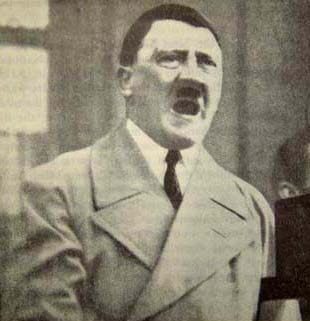 The Gate of lies is wide open: Hitler speaks.
The Gate of lies is wide open: Hitler speaks.
Origin: The Hitler TerrorThe book puts the lie to the Nazi claim that concentration camps had been designed to protect their occupants, pointing out that their machine guns were positioned to keep the occupants inside, not to keep their enemies out.
Compiling and writing the book was an act of bravery and foresight, and history would prove it to have been chillingly accurate.
Hail Hitler
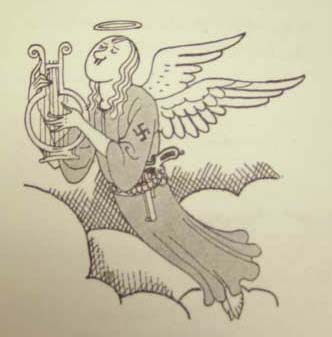 "…Jesus' Brown Army." Nazi poster quoted in Manchester Guardian, July 21 1933.
"…Jesus' Brown Army." Nazi poster quoted in Manchester Guardian, July 21 1933.
Origin: Hail HitlerThis clever book, published in 1934, uses a humorous take on the contradictions of National socialism as the spoonful of sugar that sweetens its true message: that the policies of Hitler and the Nazis were dangerous and needed to be called to the attention of a sometimes gullible public.
"In periods of revolution and turmoil, it is essential that as many people as possible should retain the capacity to think as well as to talk and shoot. It may be said of the Nazis that they have made this necessity obvious," says the introduction.
The book excerpts public speeches, newspaper articles and policy documents and illustrates them with cartoons to underscore their ridiculousness.
Here are some examples:
"A copy of Hitler's Mein Kampf is in future to be presented to all couples who are married at the registry office at Dettingen, Wurtemberg. Up till now, it has been customary in Germany to present a Bible to newly-married couples." — From The Star, Feb. 21, 1934.
 New Statesman and Nation June 3, 1933.
New Statesman and Nation June 3, 1933.
Origin: Hail Hitler"If physical beauty today were not crowded into the background by our foppish fashions, the seduction of hundreds of thousands of girls by repulsive crooked-legged Jewish bastards would be impossible." – Adolf Hitler quoted in Mein Kampf, 1933.
"Christ could not have been a Jew. Scientific proof is not necessary. It is so." — Josef Goebbels, quoted in the New Statesman and Nation, Aug. 5, 1933.
Newspapers
DRESDNER NACHRICHTEN
The city of Dresden is the capital of Sachsen in Eastern Germany. During World War II, Dresden suffered heavy bombardment by the Allies. The Russian Army overran the city and it remained within the East German regime until reunification.
The Dresdner Nachrichten, the main city newspaper, was founded in 1856. It was printed in an old Gothic font called "Fraktur". Initially, Fraktur was considered to be the most "German" font, but it was later prohibited in a 1943 decree by Hitler for being "Schwabacher Jewish lettering". That same year the paper ceased publication.
Dresdner Nachrichten was not a Nazi newspaper, but following Hitler's ascent to power in 1933, it began to publish official news and legal announcements from the Nazi government. German newspapers became increasingly antisemitic in tone.
The John and Molly Pollock Holocaust Collection acquired a few issues of the newspaper from 1938. During this period stories about Jews were given a prominent place in the paper, often in the headlines. The German public was encouraged to believe that the chief source of Germany's problems lay with its Jewish population.
JUDISCHE RUNDSCHAU
Judische Rundschau, the Zionist newspaper in Germany, played a major part in increased Zionist activities during the Nazi period. It was published in Berlin from 1902 until 1938. The single issue in our collection is dated October 28, 1938. After 41 years in publication, the paper was forced to close down after "Kristallnacht" in November 1938.
To read the articles, select a date from the menu at the left. The first page will appear. The bar across the top allows for easy browsing between the pages. Clicking on a section of the page shows a larger image of the selected article in a new window. Clicking the
"Download PDF" button downloads a PDF version of the selected article for printing
and offline reading.
For a quick look at the period, go to:
Historical Events under Selected Materials and click on the Timeline.
With the Nazis firmly entrenched and their anti semitic program advancing quickly, they used every means at their disposal to saturate the public with news of their progress and propel them to greater depths of hatred. These translated stories from 1938 editions of the Dresdner Nachrichten, or Dresden News, show the degree to which the Nazis controlled the public agenda through the media.
The complete content of the German newspapers were scanned by Shahaff Idan from the Student Web Team, and Shane Tregaskis, Web Designer.
| |

> Click to enlarge |
|
|
Successful police raid on the Kurfuerstendamm
This lead story from the front page of the June 1 edition describes police raids on two cafes that resulted in 339 people being arrested, including 317 Jews. In typical style, the story disputes anti-Nazi reports that Jews are oppressed. It suggests instead that they are thriving in criminal nests, and that the public needs to be protected from them.
|
|
|
Exchange criminals 99.9 per cent Jews
This story, also from the front page of the June 1 edition, quotes the police chief in Vienna saying that crime had flourished in Austria before it had been absorbed into Germany. Virtually all of the financial cases his department was investigating involved crime by Jews.
|
|

> Click to enlarge |
|
Mass rallies throughout Dresden
This group of stories from March 6, 1938 describes packed rallies where cheering crowds hailed senior Nazi speakers. The speakers' endlessly repeated theme was familiar: Germans had to work harder to weed out the Jews who had destroyed other great civilizations.
|
|
Holocaust Experiences
Survivor and author Elie Wiesel, recipient of the 1986 Nobel Peace Prize, told interviewer Stephen Lewis that the flood of survivors' personal memoirs that started in the 1970s represented the intersection of society's readiness to try to understand the enormity of the Holocaust and survivors' readiness to describe it. The memoirs of people who lived those experiences, he said, are the best documents for understanding what the Holocaust really was.
 |
| > Click to enlarge |
|
|
Confessions of an Auschwitz Number A18260
Poet Joseph Rogel was born in Tarnov, Poland in 1911 and settled in Montreal after the war. He had been interned in and escaped from a series of camps, including Auschwitz. |
|
 |
| > Click to enlarge |
|
|
Dachau: Prisoner 89012
Irving Eisner prayed during his final days at the Dachau concentration camp that he might be spared so he could teach others, particularly children, about the Holocaust experience. He has dedicated his life to teaching, and his book answers the question he was asked at every presentation he made: "Why didn't you write down your memories?"
|
|
 |
| > Click to enlarge |
|
|
Theresienstadt: The Town the Nazis Gave to the Jews
Vera Schiff wrote her book in part to correct the impression that the "model ghetto" of Theresienstadt was anything but a cruelly cramped and dangerous concentration camp, in many ways as deadly as the death camps to which its surviving residents were usually sent. |
|
 |
| > Click to enlarge |
|
|
I Never Saw Another Butterfly
Of the 15,000 children who passed through Theresienstadt concentration camp in occupied Czechoslovakia, only 100 survived. The drawings and poems that lived after them, some of which are assembled in this book, create a unique and poignant picture of how children experienced the Holocaust.
|
|
Holocaust Experiences (Main)
Survivor and author Elie Wiesel, recipient of the 1986 Nobel Peace Prize, told interviewer Stephen Lewis that the flood of survivors' personal memoirs that started in the 1970s represented the intersection of society's readiness to try to understand the enormity of the Holocaust and survivors' readiness to describe it. The memoirs of people who lived those experiences, he said, are the best documents for understanding what the Holocaust really was.

Poet Joseph Rogel was born in Tarnov, Poland in 1911 and settled in Montreal after the war. He had been interned in and escaped from a series of camps, including Auschwitz.

Dachau: Prisoner 89012
Irving Eisner prayed during his final days at the Dachau concentration camp that he might be spared so he could teach others, particularly children, about the Holocaust experience. He has dedicated his life to teaching, and his book answers the question he was asked at every presentation he made: "Why didn't you write down your memories?"

Theresienstadt: The Town the Nazis Gave to the Jews
Vera Schiff wrote her book in part to correct the impression that the "model ghetto" of Theresienstadt was anything but a cruelly cramped and dangerous concentration camp, in many ways as deadly as the death camps to which its surviving residents were usually sent.

I Never Saw Another Butterfly
Of the 15,000 children who passed through Theresienstadt concentration camp in occupied Czechoslovakia, only 100 survived. The drawings and poems that lived after them, some of which are assembled in this book, create a unique and poignant picture of how children experienced the Holocaust.
Confessions of an Auschwitz Number
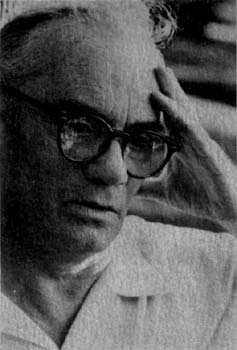 Joseph Rogel
Joseph Rogel
Origin: Confessions of an Auschwitz NumberPoet Joseph Rogel was interned in several Nazi concentration camps, the most notorious of which was Auschwitz in his native Poland. There, the infamous sign over the gate announced with cruel deception, "Arbeit Macht Frei," or "Work Makes You Free."
Auschwitz had been established in 1940, and quickly expanded under the command of Rudolf Hoess . There, between 1942 and 1944, more than one million people, mainly Jews from every European country under German occupation, would meet their deaths. Auschwitz, actually a complex of camps, was divided into three main sections: Auschwitz, Birkenau and Monowice and covered 40 square kilometres. It was a location large enough for the Nazis to envisage the realization of their "final solution" to the Jewish question and remote enough to mask their terrible program.
Before the construction of specialized gas chambers, the SS gassed victims in adapted farmhouses. Their bodies were burned on funeral pyres or in mass graves before the massive crematoria could be finished. The smoke could be smelled for miles and the light from the fires was considered a hazard by the Nazis' local air defense.
Later, victims, under the pretext of being sent to the bathhouse, were crammed into sealed chambers and killed by poison gas that came through ceiling vents. Fellow prisoners were forced to remove the bodies, only to be killed later themselves.
Gold teeth were extracted from corpses and shorn hair was saved for other uses. Eyeglasses and shoes were heaped into massive piles.
Prisoners not immediately selected for death were tattooed with identification numbers on the inside of their left forearms. They spent their foreshortened lives in starvation and forced labour, punctuated by roll calls that forced them to stand at attention for several hours. Internees were forced to witness the killing of fellow prisoners and subjected to beatings and humiliation by SS guards. Many chose the moments of their own deaths by running up against the fences, where they were electrocuted or shot.
At times, Rogel had been consigned to the notorious Block 11, where especially cruel tortures and executions were committed. Rogel settled in Montreal after the war and over the ensuing decades reflected on his experiences and their aftermath in poetry.
From the book
I Received A Letter
I received a letter
Through my newly interned friend:
It was kneaded into a mouldy piece of bread.
When we stood at the roll call
I recognized him in the line.
Afterwards in a corner
With a piece of tin
We carefully took the bread apart.
In the mouldy words
I knew my mother's handwriting
Words might be erased and rubbed away
Words might be written with a broken pencil
With a pen without ink
Words might be scratched and illegible
But in the mouldy handwriting –
I read everything –
I read everything about my home…
p. 7
Origin: Confessions of an Auschwitz Number
I See
I see
spring has come to town;
Each budding tree tells me so.
But will I still be…
To eat the fruit
Of my tree?
p. 28
Origin: Confessions of an Auschwitz Number
Dachau: Prisoner 89012
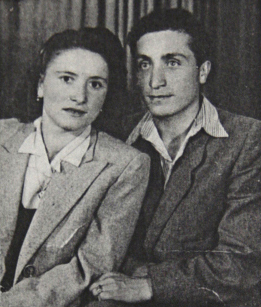 Two out of six survived. My sister and I.
Two out of six survived. My sister and I.
Origin: Dachau: Prisoner 89012Irving Eisner was among more than 200,000 people to be interned at Dachau, the first German concentration camp officially declared by the Nazis, in March 1933.
Dachau was established at the site of a deserted gunpowder factory near Munich, and first held political enemies of the Nazis arrested after the January 30 Reichstag fire . Through most of the Second World War, Dachau was used primarily to hold criminals, political and other religious opponents of the Nazis, and many if not most of the 32,000 who were registered as having died there were Christian.
But in the final eight months of the war, as the Nazis were forced to abandon their death camps in Poland, inmates were transported to German camps that included Dachau. Of all the people who died during the 12 years of Dachau's existence, nearly half died of Typhus during the last four months. The epidemic had come with prisoners transported from Polish camps.
The US Seventh Army liberated Dachau and its sub-camps in late April 1945, freeing 70,000 prisoners, many of whom had arrived only weeks before. Many of the liberated prisoners died, however, victims of the typhus or from eating too much too soon, after living so long on meager diets.
During those final days at Dachau, Eisner prayed that he might be spared, so he could teach others, particularly children, about the Holocaust experience. He kept his promise, and has dedicated his life to teaching. His book answers the question he was asked at every presentation: "Why didn't you write down your memories?"
From the book
Excerpt from Dachau: Prisoner 89012, p116-119
One day, the Germans decided to liquidate and to move our camp to Dachau again. I knew that this was it! They wanted to concentrate as many Jews into one place, and what better place could it be than the death camp of Dachau! By doing so, it would be much easier for them to kill us.
Within a few days German officers came into the camp, and through the loud speakers, announced that the camp was being moved either to Dachau or to Arlach. Those who wanted, could stay and be taken by truck or horse and carriage. They asked everyone to be ready for the next morning. A panic broke out in the camp. A cloud of despair, of death hung over the camp. We had all thought that here in this final camp, we would survive to be freed. Now we have to move, to march again! We were all skeletons, only skin and bones! We were too close to death. Who would dare go by foot, even five kilometers!?
What to do? I had to decide. To stay or go? In my heart, I had the feeling that I must take the risk and go. I did not think that the Germans would carry our almost dead bodies by trucks or by any other means. They did not have trucks anymore, and who cared for a Jew? Their aim was always: death for the Jews. No, I could not stay. Yet how could I attempt to walk? I was a "Musselman". I could hardly move.
The next morning, the German officers rushed into the camp with their pistols pointed forward and their sheppard dogs barking. They went from barrack to barrack and made everyone leave. Many of the sick crawled on their hands and knees; many were dragged by their friends. Those who refused to move were shot on the spot.
I left my barrack and saw that people were gathered on the outside of the gate. Loaves of bread and packages of margarine were given to each of them. Those were the people who had decided to go. Without hesitating, I walked to the place where there was bread. First, I wanted the bread and the margarine. I wanted to eat, and later I would decide what to do. I also saw that the camp kitchen was being emptied and the people who worked there were filling their backsacks with food, and a few extra bags. I happened to know two of the people who worked there and who were now filling bags with food. I hoped to help them carry a bag and to get some food from them. After I ate, I went back to the side with the people who did not want to leave. I could not make up my mind. All of a sudden, I again noticed that pieces of salami were given to the walkers and I walked over to the other group. First, food. While waiting for the salami, the gates were closed and I found myself among the few who were going to march to Dachau.
I do not know how I made it. I do remember that some people dragged me from time to time. I remember a kind of sleepiness, and dreaming while I walked. On our way, we met hundreds of people from other camps going in the same direction. It was another death march, a shorter one, with less casualties, because many chose to stay in the camp. The barracks that we left behind were soaked with gasoline and set on fire – together with the people.
Dachau was filled to capacity; we had to walk about ten kilometers further, to Arlach, which was about eight kilometers from Munich. We arrived there late at night. It was dark in the camp, and dark in the barracks. We were released to find a place to rest. I remember walking on top of people, as I was walking on a floor. People screamed, kicked and yelled. I walked on their heads, their faces, their bellys. I walked like a blind person. I walked until I felt an empty space under my feet, and there I sat down and put down my belongings. I remember going to the washroom, and never being able to find my place when I returned.
The German authorities did not care about discipline or order any longer. Food was not given in an orderly way anymore! No more of the regular watchmen, soldiers or Kappos. The whole camp looked like one large platform littered with bodies, hardly living. The only moving people were those who managed to bring some supplies with them, those who worked for the camp management. We were people, dying compared to sheep or cattle in a fenced place, waiting to be killed. One more hour, one more day, one more night. It could not last very long. Two days passed in this terrible misery. The people used their resting spots for their needs, rather than leave their spot to go to the washrooms. No one cared, no one had the strength to care. I gave up also. There was no point trying any longer. Lying in dirt on the floor, my bones sticking out on my hip, cheeks, arms and legs; on my head, a few strings of hair hanging here and there; I was taking my last breath of air; I was living my last hours.
That was the night, the particular and special night at the beginning of the month of May, 1945, when the final judgement was made. Life or death. A whole night, the military camp beside ours was bombarded by the planes of the Allied Air Force and their tanks. Some shells reached our camp and there were some casualties. This was the night when I shivered, and trembled. The night when the fear and anguish of death encircled me; the agony of the grave seized me. That was the night, the hour when I called upon the name of the Lord and said: ‘O Lord, save my life!
Written by Irving Eisner
Origin: Dachau: prisoner 89012
Theresienstadt
Vera Schiff, a teenager in Prague before the war, survived Theresienstadt but lost her only sister, her parents and her grandmother there. She wrote her 1996 memoir in part to remember them and to record for her own family what had happened.
Theresienstadt, a concentration camp about 90 miles north of Prague, was established in the walled 18th century town that Emperor Joseph II had named Terezin, after his mother Maria Teresia. The Nazis used the fortified walls that had been designed to protect its residents to confine them instead, eventually forcing a space meant for 5,000 to house more than ten times that number. They sent many prominent artists, musicians and other intellectuals to Theresienstadt, claiming they were isolating them for their own protection. Disease and starvation killed many of the inmates who were not transported to death camps, contradicting the Nazis' claim that it was a "model ghetto."
Under pressure from the outside, particularly from Denmark, to reveal what was happening there and in other camps, the Nazis allowed a Red Cross inspection in June 1944 after designing a cruel "Embellishment," a facade of normal existence. They constructed bogus stores and schools where internees were forced to act like they were living in contentment and required to parrot scripts their Nazi keepers had written for them in advance. As soon as the inspection was over, the charade ended and life at the camp reverted to its typical state.
Schiff wanted her book to dispel any lingering doubt that Theresienstadt was anything but a cruel and degrading concentration camp.
Excerpt from Theresienstadt: The Town the Nazis Gave to the Jews
One evening, there was a new sentry on duty. He was a middle-aged man – for me, at that time, anyone over 30 was middle-age - tall and hefty with reddish hair and a crowbar moustache. For a while, we stood silently side by side, though I could not help noticing a lewdness in his glimpse. I did not feel threatened. I knew that no Gentile in his right mind with risk anything more daring than perhaps a word or two with a Jewess. They all were briefed and dreaded the penalties Nazis imposed on those who infringed the taboo. We stood there for about an hour, when he suddenly asked me if I was hungry. My truthful answer was that I was famished. He then retorted that he would not mind sharing with me his meat sandwich. He must have noticed my eagerness and my nearly drooling expression, for he smiled amiably while he was leaving the gates for his rather late supper. It happened routinely that guards left their posts for a short break, usually around mealtime. They would trust the Jewess on duty to detain any late-arriving inmates for the final count and approval for entry into the barracks. The evening duty was mostly quiet: few inmates returned past 8 p.m. and none left the premises.
I looked wistfully as the man who promised to share his supper with me was departing from the gates. I hoped that he would place the sandwich somewhere outside the guardhouse. He would be taking a grave risk by passing it to me – perhaps someone would see him. In a camp, walls had ears and eyes, and hunger brought the worst out of some inmates. All these thoughts rushed through my mind, while I waited for him to return and tell me where I could pick up the food. I made up my mind to take it to mother who had been looking so tired lately. The camp was rough on all of us, but considerably harder for our parents who were already middle aged and who therefore had less resilience than Eva and I did. That was one more reason why I was so happy for the unexpected windfall of a delicacy such as a meat sandwich. The guard returned soon enough and whispered to me to go into the guardhouse and pick up the parcel he had left on the table.
I noticed the sandwich, wrapped in newspapers, and I rejoiced upon seeing two layers of bread liberally filled with meat. The entire guardhouse had an enticing fragrance, nearly making me salivate. The thought crossed my mind about the iniquity of it all, what the Gentiles took for granted – that nobody wanted to kill them, that they could continue to live in their homes with their families and never go hungry. They did not have to risk their lives to alleviate their hunger. I snatched the sandwich and was about to leave when I heard heavy steps behind me. Sensing danger, I turned around and faced the guard, whose face betrayed lecherous intentions. For a second he ogled me, and then he lunged at me. I swerved, bending aside, but he caught me by the waist. His revolting paws fondled my breasts and buttocks. He was bending down, trying to force a kiss. He had the appearance of an ogre: His face was sweaty and poorly shaven, and he seemed out of breath, like a man who had just finished a long-distance race.
I knew I did not stand a chance of fighting him off. He was a hefty man, trembling with obscene lust. My only chance was to trick him. Instantly, I gripped both his hands and whispered to him urgently: Look, someone just entered the gates, if they catch us, both of us will be killed. Is it worth it to die like this? I frightened him all right. He let go of me and ran back to the gates at full speed. I did not wait for his return. I grabbed the sandwich and disappeared into the dark hallways of the barracks.
Written by Vera Schiff
Origin: Theresienstadt: The Town the Nazis Gave to the Jews
I Never Saw Another Butterfly
Of the 15,000 children interned in the Transit camp at the Czechoslovakian garrison town of Terezin, only 100 survived. The memory of those who died was preserved in 6,000 poems and drawings they did, using materials that adult artists stole for them at great peril.
The hidden work, discovered after the camp was liberated, provided the material for this moving and often reprinted book, which presents a unique perspective on the Holocaust experience.
Israeli astronaut Ilon Ramon had carried a drawing called Moon Landscape by 14-year-old Terezin artist Peter Ginz aboard the space shuttle Columbia, which tragically exploded February 1, 2003. (The drawing was not part of the Pollock collection, nor had it been featured in I Never Saw Another Butterfly.)
From the Book: Images
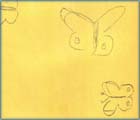
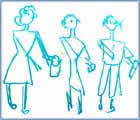
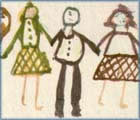
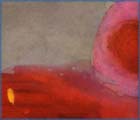
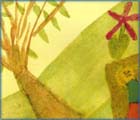
From the Book: Poems
The Butterfly
Pavel Friedmann was born January 7, 1921, in Prague and deported to Terezín on April 26, 1942. He died in Oswiecim (Auschwitz) on September 29, 1944.
The Butterfly
The last, the very last,
So richly, brightly, dazzlingly yellow.
Perhaps if the sun's tears would sing
against a white stone...
Such, such a yellow
Is carried lightly ‘way up high.
It went away I'm sure because it wished to
kiss the world goodbye.
For seven weeks I've lived in here,
Penned up inside this ghetto
But I have found my people here.
The dandelions call to me
And the white chestnut candles in the court.
Only I never saw another butterfly.
That butterfly was the last one.
Butterflies don't live in here,
In the ghetto.
Pavel Friedmann 4.6.1942
The poem is preserved in typewritten copy on thin copy paper in the collection of poetry by Pavel Friedmann which was donated to the National Jewish Museum during its documentation campaign. It is dated June 4, 1942 in the left corner.
Pavel Friedmann was born January 7, 1921, in Prague and deported to Terezín on April 26, 1942. He died in Oswiecim (Auschwitz) on September 29, 1944.
Origin: I Never Saw Another Butterfly
Homesick
The date "9.III. 1943" is in the upper right corner. All other facts missing.
Homesick
I've lived in the ghetto here more than a year,
In Terezín, in the black town now,
And when I remember my old home so dear,
I can love it more than I did, somehow.
Ah, home, home,
Why did they tear me away?
Here the weak die easy as a feather
And when they die, they die forever.
I'd like to go back home again,
It makes me think of sweet spring flowers.
Before, when I used to live at home,
It never seemed so dear and fair.
I remember now those golden days…
But maybe I'll be going there again soon.
People walk along the street,
You see at once on each you meet
That there's a ghetto here,
A place of evil and of fear.
There's little to eat and much to want,
Where bit by bit, it's horror to live.
But no one must give up!
The world turns and times change.
Yet we all hope the time will come
When we'll go home again.
Now I know how dear it is
And often I remember it.
9.3.1943. Anonymous
This poem is preserved in manuscript, written in pencil on a sheet of lined paper torn from a notebook. The date "9.III. 1943" is in the upper right corner. All other facts missing
Origin: I Never Saw Another Butterfly
Fear
Eva Picková was born in Nymburk on May 15, 1929, deported to Terezín on April 16, 1942, and perished in Oswiecim (Auschwitz) on December 18, 1943.
Fear
Today the ghetto knows a different fear,
Close in its grip, Death wields an icy scythe.
An evil sickness spreads a terror in its wake,
The victims of its shadow weep and writhe.
Today a father's heartbeat tells his fright
And mothers bend their heads into their hands.
Now children choke and die with typhus here,
A bitter tax is taken from their bands.
My heart still beats inside my breast
While friends depart for other worlds.
Perhaps it's better – who can say? –
Than watching this, to die today?
No, no, my God, we want to live!
Not watch our numbers melt away.
We want to have a better world,
We want to work – we must not die!
Eva Picková, 12 years old, Nymburk
The poem is preserved in a copy turned over to the State Jewish Museum in Prague by Dr. R. Feder in 1955. It is signed at the bottom, "12 year old Eva Picková from Nymburk".
Eva Picková was born in Nymburk on May 15, 1929, deported to Terezín on April 16, 1942, and perished in Oswiecim (Auschwitz) on December 18, 1943.
Origin: I Never Saw Another Butterfly
Holocaust and Art
Art from and about the Holocaust has served as an important means of expression for the artists who created it and as a critical means of understanding for audiences who have consumed it.
From the collection
The New Order by Arthur Szyk
J.J. Horowitz, a friend of internationally renowned illustrator Arthur Szyk , urged him to create a series of cartoons mocking the architects of European Fascism, and help to fight what Horowitz called "the battle in which all lovers of democracy are engaged." The series, published in 1941 in New York before the Americans entered the war, features highly rendered and deeply cutting caricatures. Szyk died in 1951.
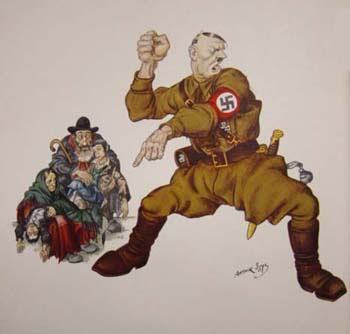
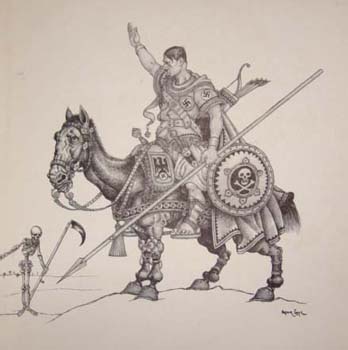
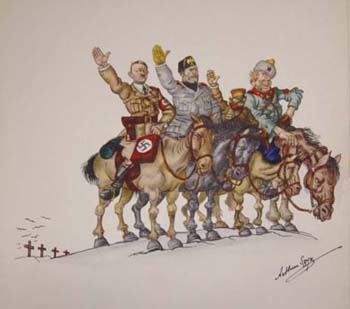
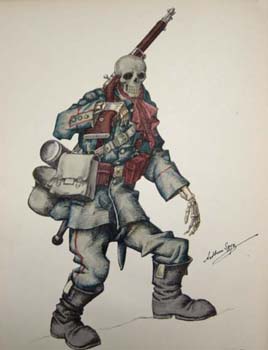
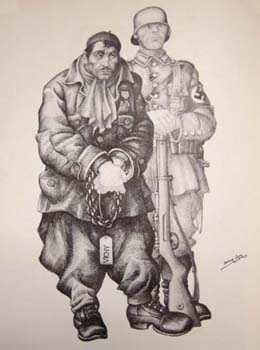
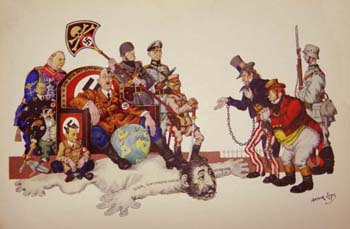
Origins: The New Order
Art out of Agony
Canadian politician, broadcaster and humanitarian Stephen Lewis interviewed 10 prominent writers, artists and filmmakers for a Canadian Broadcasting Corporation radio series that aired in May and June of 1983, to understand how they interpret the Holocaust.
Aharon Appelfeld
Survivor, novelist and literature professor Aharon Appelfeld tells Lewis that the tragedy of the Holocaust is so vast and powerful that, like the sun, it cannot be observed directly. At the same time, he says, it crystallized the Jewish identity of its survivors, many of whom had been drifting toward assimilation.
Aharon Appelfeld
You know, as human beings, we try to rationalize, but, what is very typical to people who survived the Holocaust is mainly to conceal their feelings and not to speak about them because they are untransmittable, so they became concealed. I was eight years old when the Second World War broke out. I remember all events, but it is not a chronological memory, but an inner, a secret memory. You know the unspeakable is a secret. You can only surround it, like sun, you cannot look at the sun. The temperature is too high. The Holocaust, it's the kind of temperature, you cannot speak, you cannot utter, you cannot feel. It is like death. We will never know what death really means.
Is it only a survivor who can write as you write about the Holocaust?
It shaped my life. It shaped my way of thinking, way of feeling. It shaped my generation, so I cannot escape.
Transcript of sound clip
Origin: CBC interview
Elie Wiesel
Survivor and writer Elie Wiesel debates whether the Holocaust can be understood through fiction. If it can't, he argues, it ought not to be described at all. Wiesel, who won the Nobel Peace Prize in 1986, may have been the first to use the term "Holocaust" in reference to the Genocide of European Jews.
Elie Wiesel
What happens when there are no survivors left?
That is, of course, the obsession that is haunting us. Somewhere in one of my novels I have tried to imagine that last survivor. I do not want to be that survivor. I am afraid of that survivor, of his vision. I'm afraid of the madness that would invade him, weigh upon him, to have so much knowledge and to know that, with him, all this knowledge will go down, will go out. I do not know what will happen, but am terribly pessimistic with regard to the future of humanity.
The last chapter of A Jew Today is quintessential in its pessimism not only for the end of the survivors, but also for those who did not respond to the Holocaust itself and, indeed, have been self- centred in the aftermath. Are you driven to these despairs?
No. I do whatever I can to fight them. That is why I write so many books about so many other subjects. I write about ecstasy and fervour and joy and happiness in the seventeenth century, or in Biblical times, the Talmudic era. I try to find reasons to be hopeful. It is not easy, not in the present, and yet — that is my favourite expression, "and yet" — there is despair, and yet, on the other hand there is joy, and yet. Nothing is complete. Nothing is whole. In a strange way, I believe that, due to our despair, hope is possible, if we face our despair honestly. We must try to go to the end of things to see what has been done to history and the human condition by the fact that a people have been massacred. If we do that, then we may save the world. Paradoxically, out of this despair an awesome hope can be born. If we forget, there is no doubt in my mind that one day there will be a fire that will engulf the planet, and that fire will reflect the fires that once upon a time dominated our days and our nights.
Art out of Agony p. 160 to p. 161
Origin: CBC interview sound clip
Annette Insdorf
Film critic and historian Annette Insdorf, author of Indelible Shadows: Film and the Holocaust, discusses the ability and inability of film to portray the Holocaust. She concludes, with difficulty, that even superficial depictions of the Holocaust ultimately do more good than harm.
Annette Insdorf
At one point you quote Elie Wiesel, saying that his sense of the Holocaust is untranslatable into words. Does that extend to film as well?
I feel that cinema is a very young art, compared to painting and literature and music, and we have not yet finished developing the form of cinematic vocabulary. I have seen too many fine films that have succeeded in conveying some of the horror, some of the resistance, some of the complexity of the Holocaust to believe that the film medium is incapable of doing justice to the historical event.
I do, however, acknowledge that when a film is being made within a commercial context — whether it's Hollywood, American television or even European mass-market films — the commercial exigencies of the box office make it very hard to deal appropriately with the Holocaust, or any serious subject. I don't think that Vietnam, for example, has been treated with great depth or intelligence in films. It's very hard to make good films about difficult themes; but I think it's possible, and I think that, increasingly, technological developments are giving good film-makers a greater vocabulary to work with.
You can't do a nice soap opera of the Holocaust with a beginning and a middle and an end. That's wrong, because you give people an easy cathartic experience, easy tears of indignation, and then they go home again. I'm interested in films that make you feel uncomfortable, because one of the goals of film is to make you come to grips with something that you would not have seen otherwise, not to divert you and send you home smiling.
I can appreciate that Elie Wiesel's been offended. He has the right to be; he is a survivor. I was fortunate enough never to have been near Auschwitz, although my parents are survivors. I approached the Holocaust first as a film historian and critic, aware of the limitations within which films are made these days. I honestly believe that even the films that I criticized for being simplistic, like NBC's Holocaust, are well intentioned. Those films have had a positive impact on audiences — young people, for example, who didn't know anything about the Holocaust before they saw the program — and on film-makers who, upon seeing NBC's Holocaust, felt the need to do better. In other words, even when a film is not great in its own terms, it is an important part of an ongoing debate in the making of films about the Holocaust.
Art Out of Agony p. 121
Origin: CBC interview
Historical Events
The roots of the Holocaust reach far back into history, to the origins of antisemitism itself. But the historical events that directly preceded the Nazis' program to destroy Europe's Jews began with the end of the First World War. Here, as a starting point, is a brief summary of the cataclysm that destroyed nearly six million Jews before their killers were finally stopped at the end of the Second World War
1918section>
-
Germany defeated in First World War (1914-1918). Kaiser (the king) abdicates. Germany loses overseas colonies. Widespread unrest, violence, as Germany - having only consolidated into a single state late in the previous century - struggles to transform itself into a republic. Conditions of Versailles Peace Treaty, including reparations, contribute to inflation and poverty, slowing economic recovery. Climate of disorder breeds hunt for scapegoat. Jews represent about one per cent of German population. Antisemitism flourishes amid uncertainty and upheaval.
1920section>
-
February: Platform for future Nazi or National Socialist party written by unemployed former corporal Adolf Hitler and associates. They believe Aryan Germans constitute a superior race entitled to rule the world. They allege their only barrier is the Jew, portrayed simultaneously as subhuman and superhuman, responsible for Germany's defeat in the war and bent on destroying the German Volk (people).
1933section>
-
Jan: Hitler becomes Chancellor.
March: First concentration camp established at Dachau receives prisoners immediately.
April: National one-day boycott of Jewish-owned stores. Quotas set for Jews in educational institutions. Laws introduced barring Jews from public service.
May: Books by leading Jewish and non-Jewish writers publicly burned.
Sept: Jews barred from arts and communications, including film, radio and other media.
1934section>
-
Jan: Germany, Poland sign 10-year non-aggression pact.
June: Hitler orders SS executions of former colleagues.
Aug: German president von Hindenburg dies, allowing Hitler to establish dictatorship.
1935section>
-
March: German conscription violates Versailles treaty.
Sept: Nuremberg laws define who can be German citizens, outlaw intermarriage and other contacts with Jews.
Dec: Jews dismissed from civil service.
1936section>
-
Aryan boys of 10 must join Hitler Youth and swear oath to Fuehrer. Soldiers, teachers, civil servants swear similar oath, not to German government, but to Hitler himself. Hitler and Italian dictator Benito Mussolini form Rome-Berlin Axis.
1938section>
-
March: Germany occupies Vienna, annexes Austria. Hitler, born in Austria, greeted with enthusiasm. Austrian Jews attacked and publicly humiliated.
April: Germany orders registration of Jewish property. Austria expropriates Jewish property.
June: 1,500 German Jews interned in concentration camps. Jewish doctors in Germany restricted to treating Jewish patients.
July: To cheers, Nazis announce from steps of Munich's Great Synagogue that it is to be destroyed.
Aug: Decree orders all Jewish men to adopt name "Israel," women to adopt "Sarah," and to buy new identification under these names.
Sept: Germany annexes Czechoslovakia's German-speaking Sudetenland. Germany's Jews barred from practicing law.
Oct: Passports of German Jews stamped with prominent red letter "J". 17,000 stateless German Jews forced into Polish territory.
Nov: German embassy official assassinated in Paris by Jewish youth whose family had been deported to Poland. Nazis use event to stage Kristallnacht pogrom which destroys all Jewish synagogues and public institutions and many businesses in Germany. Hundreds of Jews killed, 30,000 interned in concentration camps. The Jewish community is fined billions of marks for its collective "crimes."
1939section>
-
Jan: Laws bar Jews from working with Germans. Germany seizes Czechoslovakia, enters Prague, action launched against Jews in Bohemia and Moravia. Slovakia is set up as separate puppet state.
Aug.: Nazi-Soviet pact signed.
Sept:Germany invades Poland, despite British, French warnings. Nazis claim Poland had planned to invade Germany, and display bodies of concentration camp inmates dressed in German uniforms to offer as evidence. Britain, France declare war on Germany. While Germany seizes important Polish centres, Soviets annex territory in eastern Poland. SS orders census of Polish Jews and tally of their property.
Oct: First Polish ghetto established, Jews transported from locations across Poland, Germany and Austria.
Dec: Germans seize all Jewish property in Poland.
1940section>

April: Germans overrun Denmark, Norway. Nazis decree Krakow must be free of Jews by November. Auschwitz selected as site for new concentration camp, first prisoners mainly Polish. Polish ghetto at Lodz sealed.
May: Germany invades Luxembourg, Belgium, Netherlands, Denmark and Norway. All surrender. Germans overrun much of Northern France, British troops evacuate. Nazis order killing of thousands of Polish intellectuals and other leaders.
June: Italy enters war on side of Germany. German forces enter Paris, Germany and France sign armistice. Pro-Nazi French government established at Vichy, unoccupied France.
July: Germans start bombing London. Jews expelled from Alsace and Lorraine to southern France. German Jews prohibited from owning telephones.
Sept: Slovakia's fascist government establishes Jewish ghetto.

Oct: Vichy government establishes first anti-Jewish laws. Romanian law establishes right to seize Jewish property. Bulgaria restricts Jewish rights. Jewish businesses in Holland registered, Jewish civil servants dismissed. Jews deported to French concentration camps. Jews were sealed inside the infamous Warsaw ghetto in 1940. The tops of the wall were embedded with broken glass.
Nov: Warsaw ghetto sealed. Overcrowding worsens as more Jews from Poland and Germany forcibly relocated there.
1941section>

Jan: All Jews registered in Netherlands, presaging killing of nearly 80 per cent of Dutch Jews. Map showing rerouting of Jews to Auschwitz
Feb: Romania doubles criminal punishments for Jews. First Jews sent from Amsterdam to Buchenwald. Nazis order Auschwitz expansion. Krakow ghetto sealed.
April: Last-minute decision to attack Yugoslavia slows German plans to invade and conquer Soviet Union before winter. Nazis briefly take Iraq, begin anti-Jewish pogrom before British take Baghdad. Polish ghetto of Lublin sealed, Radom ghetto established. Anti-Jewish riots in Antwerp.
May: Romania allows Jews to be drafted for forced labour.
June: Germany begins massive campaign to conquer Soviet Union. Jews in Zagreb, Yugoslavia, deported to concentration camps. Conditions in the ghettoes were cramped and dirty, without enough food to go around.
Aug: Ghettos established in occupied Soviet Union. Jews in occupied USSR killed by mobile killing squads, often after digging their own mass graves. Eight thousand Jews killed in Vilna, Poland.
Sept: Nazi killing of disabled Germans deemed unsuitable. Aryan breeding stock officially ends after protests by Germans, following deaths of more than 70,000. Hundreds of Russians die at Auschwitz during first experiments in large-scale killing by using gas chambers. Tens of thousands killed by mobile Nazi death squads in occupied Eastern territories. In Kiev, 33,000 shot. In Odessa, 19,000.
Dec: Japan attacks Pearl Harbour and other American bases in the Pacific, forcing Americans into war. Germany declares war on the US. More death camps open, all in Poland.
1942section>

Jan: Nazis meet at Wannsee Conference outside Berlin to plan "Final Solution," the complete destruction of all Jews in their grasp. Participants include SS officials Adolf Eichmann and Reinhard Heydrich. Jews in Vilna ghetto organize partisan organization.
Feb: First Jews sent from Salonika, Greece to be killed at Auschwitz. The Struma, a Jewish refugee ship, turned back by British officials off the coast of Palestine, sinks off Turkey, killing all but one of 769 aboard. Four million Jews were killed at Auschwitz-Birkenau.
March: In Poland, Sobibor death camp prepared for opening. 5,000 Jews from Minsk, Belarus, are killed by Einsatzgruppen, or mobile killing squads. Belgian Jews are forced into labour battalions. At the new Belzec death camp in Poland, 30,000 Polish Jews from Lublin are killed. Another 15,000 are killed in March. SS sends first trainload of Jews to Auschwitz. More than 55,000 Slovakian Jews sent to death camps. First transport of French Jews sent to Auschwitz.
April: Deportations and local killing of Jews continue in Poland, the Baltic countries and Soviet territories occupied by Germany. Organized resistance grows in ghettoes and among partisan groups. In Belgium, Jews forced to wear the yellow star. In Prague, an underground team from Britain fatally wounds acting governor of occupied Czechoslovakia, Reinhard Heydrich, who had previously headed the Gestapo and was a key organizer of the "Final Solution." Nazis raze Catholic village of Lidice in reprisal, killing all of its 192 men and 71 of its women, sending the remainder to Ravensbruck concentration camp. Some children who look sufficiently "Aryan" selected to be raised as Germans.
May: Jews in occupied France forced to wear stars.

June: Deportations from Drancy concentration camp in France and Westerbork concentration camp in Holland to Auschwitz begin.
July: More than 40,000 French Jews sent to Auschwitz. SS leader Himmler orders all Jews in Poland to be exterminated by the end of the year. Treblinka death camp opens in Poland, and within 14 months becomes the killing ground for 850,000 Jews. The Warsaw ghetto is emptied of all but 60,000 remaining inhabitants when 300,000 are sent to Treblinka. Near Minsk, 30,000 German Jews are killed.
Sept: Jews in Macedonia forced to wear the yellow star. German 6th army reaches Stalingrad, starting what will be a disastrous battle for the Germans and a turning point in the war.
October: Nazis step up deportation of Jews from Holland. More than 1,000 Jews in Rome arrested and sent to Auschwitz. In Krakow, 7,000 Jews deported to Belzec death camp, and hundreds more are shot in the ghetto. In Libya, hundreds of local Jews are killed as race laws are enforced.
Nov: In the ghetto of Lvov in the Ukraine, 15,000 Jews killed.
Dec: German and Italian forces take over Tunisia, and order Jewish community to recruit 2,000 for forced labour. By the time they are defeated, the Axis powers there will have placed 5,000 Jews in concentration camps. In London, Poland's government in exile asks Allies to retaliate for Nazi killings of Jews and others in Poland. Nazis create a ghetto at Kharkov, in the Ukraine, and within weeks 15,000 Jews are killed at a nearby ravine. The last Jews in Pinsk, Poland, are killed.
1943section>

Jan: More than 5,000 Jews from Warsaw are deported and killed, and Warsaw's first ghetto uprising occurs. In Libya, British forces take Tripoli. Germans surrender the remnants of an entire army to Soviets at Stalingrad.
Feb: At Bialystock, Poland, 2,000 Jews are killed and 10,000 deported despite armed resistance. The first transport of Roma, also called Gypsies, reaches Auschwitz.
March: Macedonian Jews and most Jews from Bulgarian Thrace are sent to Treblinka death camp.
April-May: Widespread uprising in Warsaw ghetto. After hundreds of thousands of Jews are deported to death camps, remaining internees take up arms against Nazis in January, disrupting their deportation schedule. The Nazis in turn order total destruction of the ghetto. They shell and gas interned residents, burn down hiding places and bunkers and flood fighters out of sewers. Men, women and children are burned inside buildings or jump to their deaths. Despite a month of fierce opposition from within and the help of Polish resistance fighters outside the ghetto, it is emptied of people and destroyed by mid-May. Allies liberate Tunisia.

June: Nazis liquidate Lvov ghetto, killing 3,000 during resistance, sending remaining 7,000 to nearby Janowska death camp.
July: Allies invade Sicily. Nazis liquidate Ostland ghettoes.
Aug: Armed resistance as Nazis liquidate Dedzin and Sonsowiec ghettoes, deporting most Jews to Auschwitz. Armed uprising by Jewish workers forced into labour at Treblinka crematoria succeeds in destroying most camp buildings, but breakout fails, and most prisoners are shot. Surviving prisoners forced to tear down remaining structures and hide traces of the camp before being killed. A peasant is then settled on the site where 870,000 people had been killed. Uprising by 30,000 Jews remaining in Bialystock ghetto in resistance to evacuation order. Auschwitz receives 120 Jews from distant Greek island of Rhodes.
Sept: Vilna ghetto uprising fails though some fighters escape and join partisans. Ghetto is liquidated. Latvian women huddled at the tip of a mass grave waiting to be shot. Tarnow ghetto is liquidated despite armed resistance, with remaining 10,000 inmates deported. Last Belgian Jews are deported. Germans occupy Athens, previously held by the Italians, and begin plans for elimination of Jews. New non-Fascist Italian government signs armistice with Allies. Final 2,000 Amsterdam Jews are sent to Westerbork transit camp en route to extermination camps in Poland.

Oct: German forces begin arresting Danish Jews, but Danish resistance helps the large majority, more than 7,000, escape to neutral Sweden. Uprising at Sobibor death camp. The Vatican fails to intervene in arrest and deportation of Jews in Rome, which, along with most of northern Italy, is still held by Germans. Jews also arrested in Genoa.
Nov: More than 40,000 Jews killed in Operation Harvest Festival, as Poniatowa, Trawniki and Majdanek camps in Poland are liquidated. Jews are arrested in Florence, Milan, Ferrara and Venice. Jews revolt at Janowska camp. Some escape, most are killed. Germans order all Italian Jews held in camps.
1944section>
-
March: Germans occupy Hungary, A German ally, crushing the country's attempt to withdraw Hungarian forces from Russian front.
April: Hungarian Jews forced to wear yellow stars, first Hungarian ghettoes are established, and first Hungarian Jews are killed at Auschwitz.
May: Allies capture Rome. More than 400,000 Hungarian Jews killed at Auschwitz by July.
June: On D-Day, Allies land successfully in France, opening second European front, further taxing already diminishing German forces. Plan for total destruction of Jews continues unabated, despite stress on rail lines, military equipment, personnel an other scarce resources. Jews in Budapest confined to special "Jewish buildings."
July: Kowno ghetto liquidated, its inmates killed or forced to March toward Germany. Soviets liberate Vilna. Attempted assassination of Hitler by a group of his generals fails, resulting in a purge of senior officers and civilian officials. Films of their deaths by torture are used as warnings to new officers. As Russians advance, Nazis hide evidence of their mass killings, and force prisoners on death marches deeper into remaining German territory. On one 125-kilometre march, 1,000 of 3,6000 prisoners are killed.
Aug Allies liberate France. Polish underground rebellion begins in Warsaw, but deportations from Lodz ghetto continue. More than 90 per cent of Poland's pre-war Jewish population is killed in the Holocaust. Romania's pro-Nazi regime is overthrown.
Sept: Allies liberate Antwerp. Final transport of Jews from Westerbork, bringing total to 103 trains that carried nearly 100,000 Jews to their deaths.
Oct: Germans crush Warsaw uprising. Uprising of workers at Auschwitz crematoria destroys one gas chamber before fighters are killed.
Dec: Soviet forces completely surround Budapest, where Nazis have continued to deport Jews to Auschwitz.
1945section>

Jan: Nazis begin evacuating Auschwitz as Soviets close in. More than a quarter of the 60,000 on first march die. Soviets take Warsaw. Raoul Wallenberg, the Swedish diplomat who saved many Hungarian Jews, is arrested by the Soviets and disappears into Soviet prison system. The SS evacuates the Blechhammer camp near Auschwitz and 1,000 of the 4,000 Jews die during forced march. Of 50,000 Jews evacuated from Stutthof camp in Eastern Poland, 26,000 die or are killed during march. Soviets capture Auschwitz, find 7,650 prisoners alive.
Feb: Soviets capture Budapest.
March: Allies enter Germany. Belsen guards became prisoners when the camp was liberated in April 1945.
April: Nazis evacuate 28,000 from Mathausen camp and kill more than 7,000 others. Allies liberate Bergen-Belsen camp during typhoid epidemic. Italian partisans shoot Mussolini as he tries to escape to Switzerland. Americans liberate Dachau. Soviets capture Slovakia. As Soviets complete their capture of Berlin, Hitler and his companion Eva Braun commit suicide in his bunker.
May: Nazis turn over Theresienstadt camp and its remaining 17,000 Jewish inmates to International Red Cross. War in Europe ends.
Aug: Japan surrenders, ending Second World War after US drops atomic bombs on Hiroshima and Nagasaki. Many top Nazis are captured to be tried for war crimes, though many others change their identities and live out their days unpunished and unrepentant.
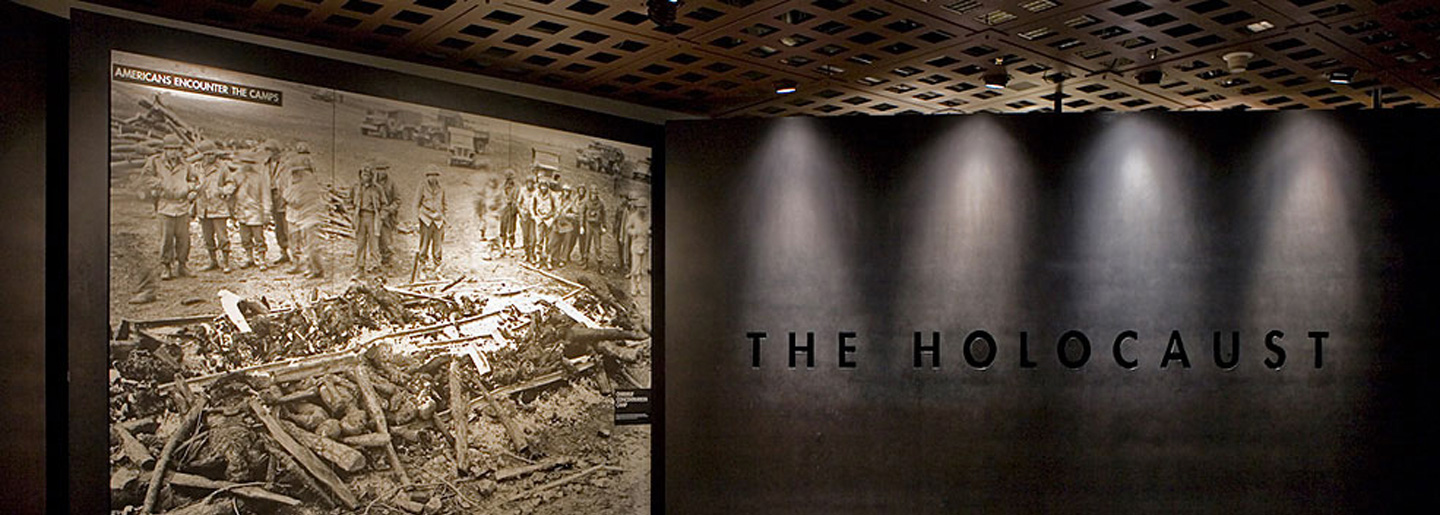












![Baldur von Schirach (saluting), leader of the Hitler Youth, and Julius Streicher (in light-colored jacket), editor of the antisemitic newspaper, "Der Stuermer," review a parade of Hitler Youth in Nuremberg. [Photograph #08063]](http://libraryapps.centennialcollege.ca/holocaust_pollock/popups/images/08063_350.jpg)
![The facial features of a young German woman are measured during a racial examination. [Photograph #78569]](http://libraryapps.centennialcollege.ca/holocaust_pollock/popups/images/78569_350.jpg)






![Baldur von Schirach (saluting), leader of the Hitler Youth, and Julius Streicher (in light-colored jacket), editor of the antisemitic newspaper, "Der Stuermer," review a parade of Hitler Youth in Nuremberg. [Photograph #08063]](/holocaust_pollock/popups/images/08063_350.jpg)
![The facial features of a young German woman are measured during a racial examination. [Photograph #78569]](/holocaust_pollock/popups/images/78569_350.jpg)
















































































































































































































































































































































































